

NOAO-S EPO program is part of the larger NOAO EPO program [1] (led from Tucson), is a strategic part of NOAO-S operations and development. It runs various programs adapted for Chilean community, resulting in relationships with the Chilean public and government which is key to make them aware of the Dark Skies Program.
NOAO-South EPO program team can be found here [2].
The following links present the NOAO EPO Program in Chile.
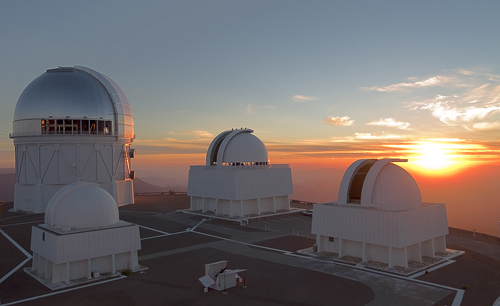 [3] [3] |
Visits to Tololo [4] Astronomers from all over the world come to observe to CTIO. In addittion, CTIO offers guided tours to the public at Cerro Tololo every Saturday. |
Education
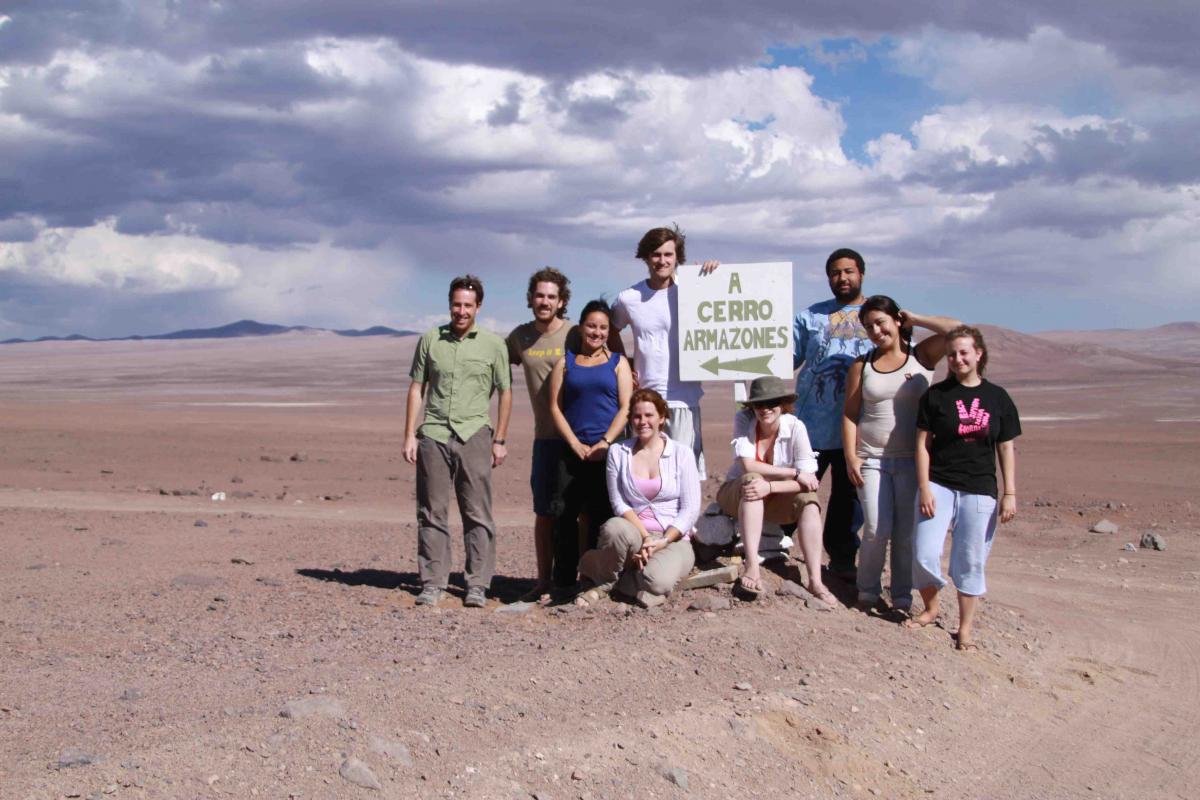 |
Student Programs/Internships [5]
|
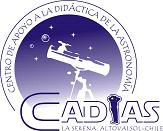 [10] [10] |
CADIAS [11] Acronysm for "Centro de Apoyo de la Didáctica de la Astronomía" is a center for the support to the astronomy didactics. |
Public Outreach
 |
Astro Chile [12] Is an EPO Program in charge of innovate in astronomy teaching. |
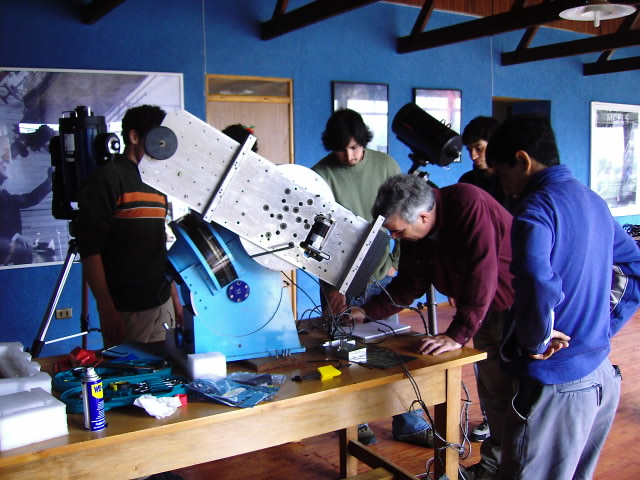 |
Robotic Telescope Hugo E. Schwarz [13] EPO program, a joint effort between ULS students and astronomers and engineers at CTIO. |
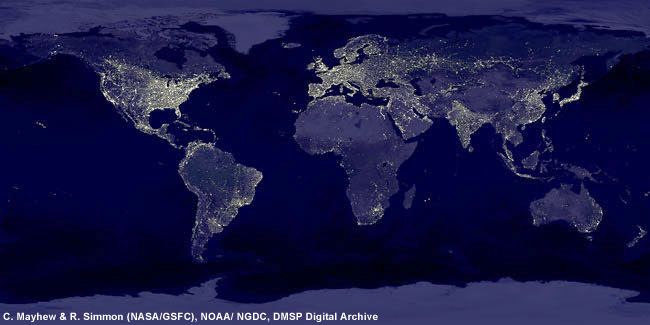 |
Dark Sky Education [14] Is an EPO Program. It runs Globe at Night, [15] an annual program to measure the sky quality. |
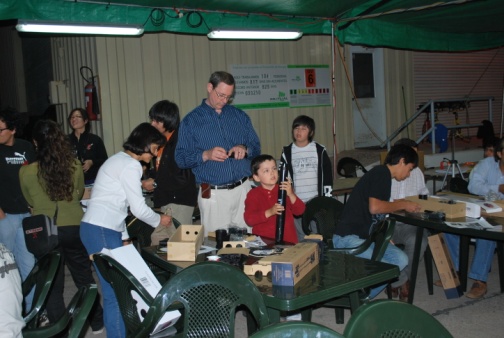 |
Teaching with Galileoscopes [16] Galileoscopes assembly and observing plan for NOAO-S staff & local schools students. |
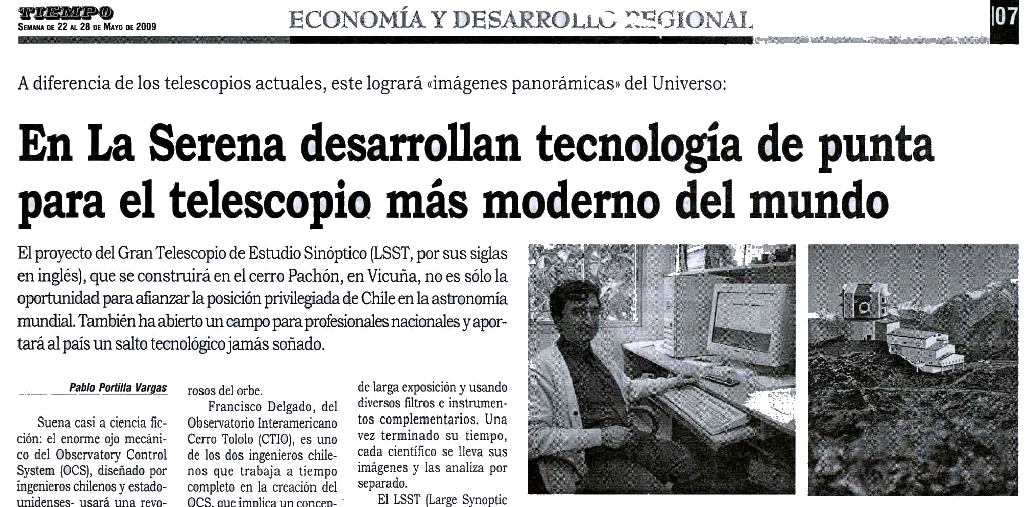 |
Media relation, participation at major events, hand-outs [17] |
EPO NOAO-S participates in:
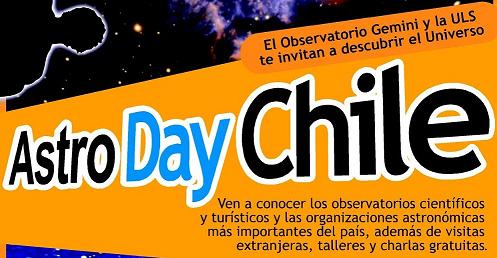 [18] [18] |
Astro Day [18] Is a community event celebrated each year and organized by Gemini outreach office in Ls Serena, Chile. |
Other EPO NOAO-S programs [19]
Interesting links to worldwide astronomical resources [20]
Cerro Tololo Inter-American Observatory (CTIO) runs two student programs each southern hemisphere summer. The Research Experiences for Undergraduates (REU) program is an NSF-funded research internship program, which selects six undergraduate students from the United States of America and lasts 10 weeks. For the 2016 program, the program dates will be January 8th - March 19th. Travel to and from the student's home institution is provided. The Prácticas de Investigación en Astronomía (PIA) is a similar research internship program conducted simultaneously for two Chilean students by CTIO.
The REU program pays a reasonable stipend for the the 10-week duration of the program. For 2016, this works out to $640 per week, paid in bi-weekly increments. The PIA program also pays a stipend commensurate with Chilean living standards, which is paid on a monthly basis.
Unfortunately, the REU program only accepts U.S. undergraduates. However, in several instances, students have delayed graduation by a semester in order to participate in the program. For the PIA program for Chilean students, we can accept undergraduate students, students who have recently received their undergraduate degree (no more than two years since graduation), and first-year or second-year masters students who have not yet begun their masters thesis. Participants in the REU and PIA programs must commit to working full-time on the PIA program during the entire 10 weeks, e.g. you cannot be working at another job, taking classes, or working on a master's thesis while participating in the program.
For the REU program at CTIO, we choose students and then solicit projects from the staff astronomers to meet the general interests and abilities of those students. Thus, we do not know the research projects that will be offered until about a month after the students are selected. This is part of the benefit to participants in our REU program-to be exposed to a field of astronomical research that you have not yet experienced! As such, we especially encourage students who are flexible about the kind of astronomical research they work on to apply. You can look at the sorts of projects that have been offered in recent years to get an idea of what topics may be available this year: http://www.ctio.noao.edu/noao/content/REUPIA-Previous-Programs [21]. If you have a specific area you would like to work in though, make sure to mention that in your application!
The CTIO REU/PIA program is hosted at the AURA recinto (compound) in La Serena, Chile. The program provides subsidized housing at House #13 on the recinto. Generally, this means a private room, although due to space considerations, some students are asked to share. The rent is between $220 - $330 dollars per month depending on the U.S. Dollar/Chilean Peso exchange rate, the size of the room, and if the room is shared or single accomodation. REU students are expected to pay their rent each month in the CTIO Treasury Office using their REU stipend. PIA students are paid directly by CTIO, and thus their rent is paid for them and their stipend is adjusted accordingly.
In principle, yes, and credit has been awarded before. However, each university is different, so this question must be addressed on a case by case basis.
Unfortunately, the CTIO REU program cannot provide medical insurance for its students. However, we ask that all REU students provide proof of international coverage for the duration of the program. If you currently do not have any insurance coverage, we recommend imglobal.com [22] which offers low rates of approximately USD$50 - $300 for coverage for the duration of the program, depending on the level of coverage selected. The PIA students (since their pay comes directly from CTIO) are provided temporary health insurance by CTIO during the program, and their stipend amounts are adjusted accordingly.
Not officially. However, if you have an interesting project in mind and there is funding available through a third party, we try to be accommodating.
While most of the students selected tend to be Juniors or Seniors, the selection committee is looking for a diverse mix of students, so we always advise anyone who is interested to apply. Generally, we accept students who have at least taken at least 1 semester of university-level astronomy. Students with less experience than this are less likely to be selected, but by applying you introduce yourself to the committee, which can be a positive thing for the next round of applications. Apply!
Absolutely! In fact, we would be disappointed if you didn't. Of course, you will be asked to pay any additional costs incurred because of your lengthened stay.
If you have any other questions that were not answered above, please do not hesitate to contact us at ctioreuATctio.noao.edu [23].
by Ryan Campbell (REU/PIA Student Coordinator 2009-2010), Updated by Catherine Kaleida (REU/PIA Student Coordinator 2012-2016)
NOAO-S EPO Program
Besides the programs mentioned before: CADIAS [11], Dark Sky Education [14], Teaching with Galileoscopes [16], Visitor Center [24], Robotic Telescope [13], Media Relations [17] and Astro Chile [12]; there are Collaboration Projects, Intern students collaboration and Public Outreach.
Collaboration Projects
Many projects are carried out with collaboration of local and national institutions, such as Explora from CONICYT, the University of La Serena. Some examples are the National School Astronomy Congress and the International Amateur Astronomy Congress in 2009, each with the participation of 200 students, teaches and general public.
Intern students collaboration
The observatory recieves professional interns in differents areas each year, which offers the opportunity of their collaboration in activities organized by EPO. During the summer 2009-2010, there were 27 interns, who participated in 2 star parties, one organized by NOAO EPO team and another by Gemini.
Public Outreach
NOAO EPO, presented a project to make CADIAS the official insttution to train astronomical tourism guides in the region.
EPO/CADIAS participates in seminar and meetings. During 2007 it took part of 22 community events. In 2008, 25 events. In 2009, 31 events...
| MISSION
CADIAS mission is responsible at all levels for promoting the development of education, science and technology, through astronomy. It also promote full access of all people in the Region of Coquimbo to their facilities, through a system ensuring equal opportunities and quality learning. It also seeks to fully bind the citizen through the dissemination of astronomical knowledge in a didactic way, just like that stimulating research in various areas of knowledge. |
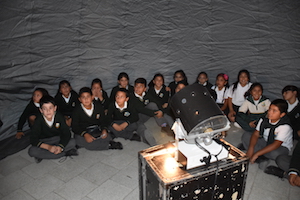 |
| HISTORY
1998 In this year was realized the event “SEMANA ASTRONÓMICA (Astronomical Week)”, sponsored by AURA Observatory in Chile / Cerro Tololo Observatory, and by “Universidad de La Serena”. In this event participated “Colegio Francisco de Aguirre”, performing an exhibition in September with student works and supported with an exhibition of astronomical photographs and talks called "Starfall, the Leonidas" by Mr. Arturo Gómez, a leading astrophotographer of Cerro Tololo Observatory. On this occasion he invited the community to observe this celestial phenomenon would happen in November. The Student Network of La Serena is an organization formed in August 1999, to the Cultural, Educational and Scientific Project called "EL SOL NUESTRA ESTRELLA" organized by “Colegio Francisco de Aguirre” from La Serena, sponsored by AURA Observatory in Chile / Cerro Tololo Observatory, and sponsored by “Universidad de La Serena”, “Telefónica CTC” and “Diario El Dia”. In to date participate 9 schools. |
|
"This program is executed by EPO (Daniel Munizaga) to present to the public night sky images accomplished during visits to Tololo and other observatory sites".
Go to gallery [25]
Astro Chile is an EPO project, which began in 2002, result of the collaboration of Tucson and La Serena teachers and astronomers that promote the development of methodological innovations in the teaching of Astronomy, through videoconferences.
In 2008, the activities included 2 videoconferences workshop of 50 students and a lab session for 6 schools in Chile and 6 in United States.
In 2009-2010, 2 GAN (Globe At Night) videoconferences were performed with Tucson and La Serena school students.
Visit the Astro Chile page in NOAO site [26]
Dark Sky Education (in progress) Is an EPO Program.
It runs Globe at Night [15], an annual program to measure the sky quality with SQM (Sky Quality Meter) or naked eye, with the participation of students, teachers and general public. It has been developed in the Coquimbo Region for 3 years.
During the campaign of 2010, there were 67 schools participating with 83 teachers involved in training throughout the region. We also had the very special participation of teachers from Copiapó (3rd Region) and Antofagasta (2nd Region) from the north of Chile.
An introduction to Dark Skies/ Light Pollution [27]
Oficina de Proteccion de la Calidad del Cielo del Norte de Chile, OPCC [28] is the Northern Chile Skies Quality Protection Office
This EPO NOAO-South program is based on the "Teaching with Telescopes" program in NOAO-N.
Its goal is the training -which consist on the assembly of the galileoscope and an observing plan- and delivery of 500 Galileoscopes to local students community and staff.
It started in March 2010 with the NOAO-S staff, and it will continue with the Coquimbo region selected schools in September, October and November 2010.

by Leonor Opazo
(in progress)
Robotic Telescope Hugo E. Schwarz is an EPO NOAO-South project, whose goal is the refurbishing and updating the mount and dome of the Robotic Telescope donated by Las Campanas Observatory.
It began in 2008? in collaboration of the Universidad de la Serena (ULS) mechanical, electronical and physics students and voluntary participants of CTIO astronomers and engineers.
In 2008, 9 ULS students participated, divided in 2 teams: the first in the development of a new electronic drive system for the mount, and the second, dedicate to re-design the dome mechanism.
In 2009-2010, 3 students participated in this project's development.
NOAO offers a 10-week Research Experience for Undergraduates (REU) Program for U.S. undergraduate students at CTIO during the southern hemisphere summer.
REU/PIA FAQ [32]
CTIO offers two summer internship positions for Chilean undergraduate or first- or second-year masters students in the Práctica en Investigación en Astronomía Program.
REU/PIA FAQ [32]
CTIO Research Experiences for Undergraduates (REU) Program
The 2015 REU and PIA Students in front of the 4-m Blanco Telescope at CTIO
IMPORTANT NOTE: We do not currently have funding to host the REU program in 2018.
We do, on occasion, accept unpaid interns who have funding through another source. For example, in the past we have hosted unpaid interns with funding through a scholarship or grant from their university, and through the Fulbright Program [35]. If you have a source of external funding and would like to apply for an unpaid internship at CTIO, or if you have any questions about past CTIO REU programs, please send email to ctioreu@noao.edu [36]. Below you can find the information describing our previous CTIO REU programs.
The Cerro Tololo Inter-American Observatory (CTIO) [37], a division of the National Optical Astronomy Observatories (NOAO) [38], located in La Serena, Chile, offers 10 week Undergraduate Research Assistantships to qualified undergraduates as part of the National Science Foundation [39] funded Research Experiences for Undergraduates (REU) program [40]. The program is run during the Chilean summer, January through March, both to offer students an alternative to the more common northern summer programs, and to encourage interaction with Chilean students visiting and working at CTIO throughout these months as a part of the Práctica en Investigación en Astronomía (PIA) Program [41]. The 2016 CTIO REU program will run from January 8th to March 19th, 2016. You can find answers to common questions about the CTIO REU program on the Frequently Asked Questions page: REU/PIA FAQ [32].
We do not offer the REU program during the northern summer months of June through August. Students interested in programs during this period should investigate the opportunities provided by the Kitt Peak National Observatory REU program [42] and at other REU sites [40], as well as the listings of summer programs maintained by the American Astronomical Society [43], the American Physical Society [44], and on the Pathways to Science [45] website.
More information on how to apply to the CTIO REU program can be found in the application instructions [46]. The application deadline for the 2016 program has passed. Our 2016 program accepted 6 REU students from U.S. institutions, and 2 PIA students from Chilean institutions.
The 2016 REU program advertisement flier can be downloaded here [47].
CTIO PIA Program [41]
Current and Past REU/PIA Programs [21]
CTIO REU/PIA Alumni [48]
CTIO REU & PIA Programs Publication List [49]
REU/PIA FAQ [32]
REU/PIA Current and Previous Programs
Click on the links above each picture for more details.
REU/PIA 2016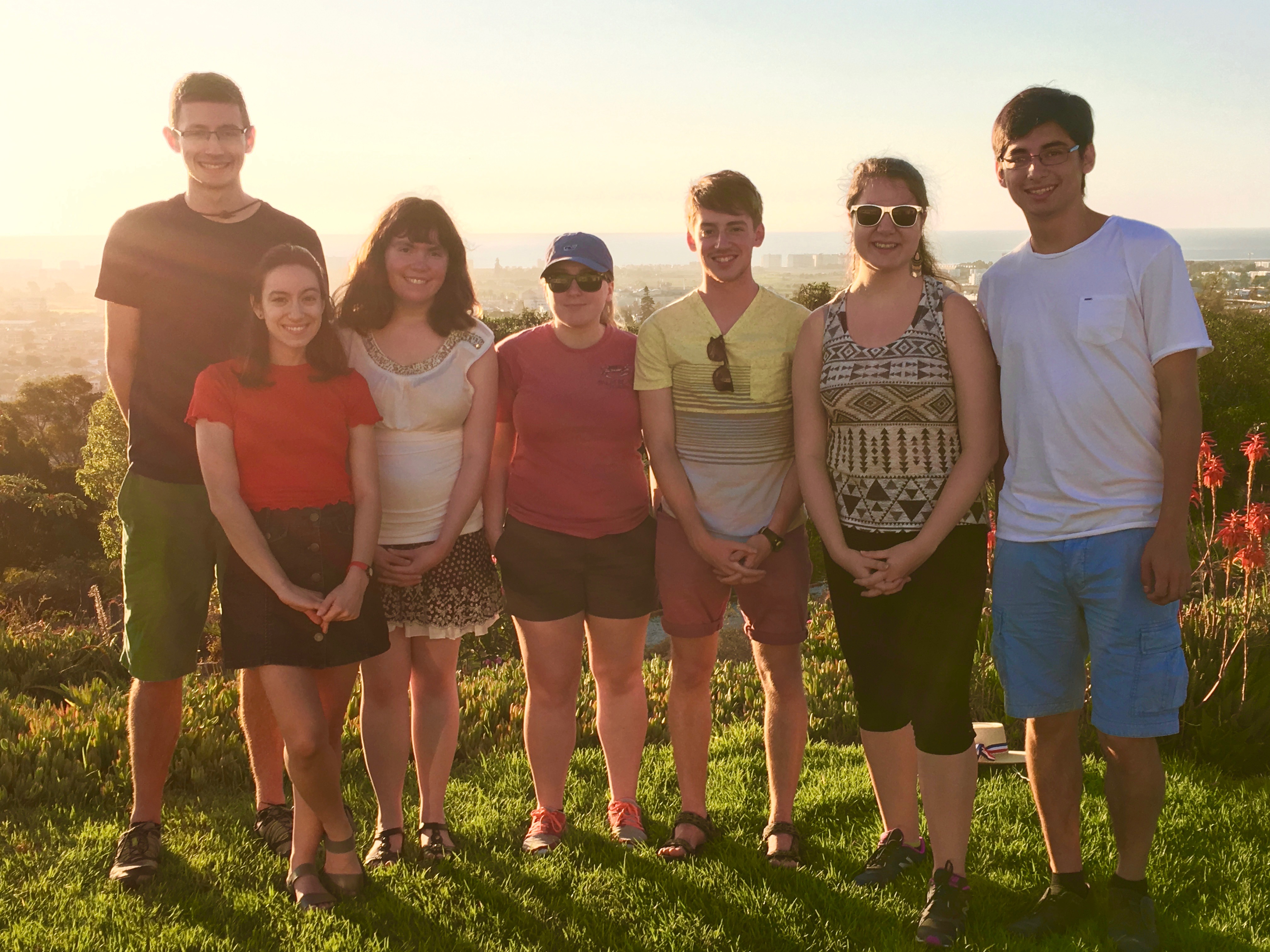 [51] [51] |
REU/PIA 2015 |
REU/PIA 2014 [53] |
| REU/PIA 2013 [54] |
REU/PIA 2012 |
REU/PIA 2011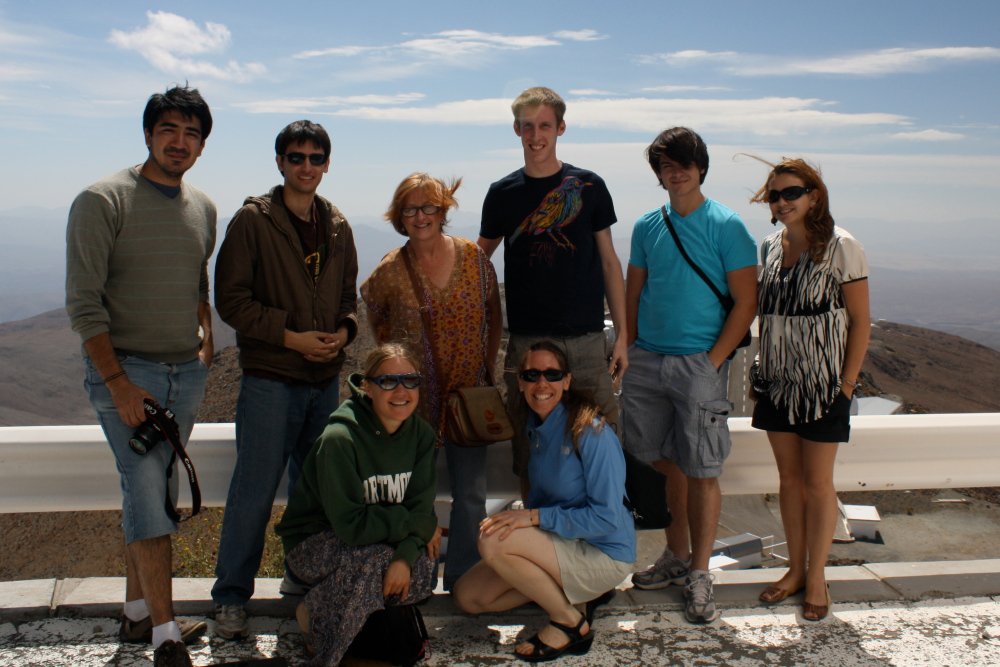 [56] [56] |
REU/PIA 2010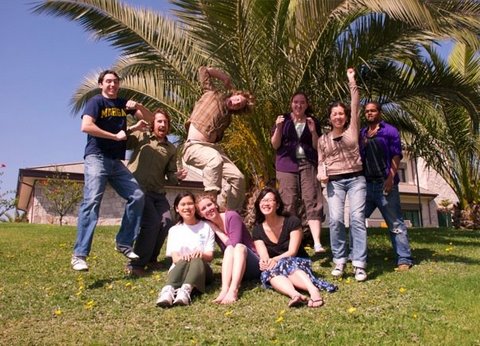 [57] [57] |
REU/PIA 2009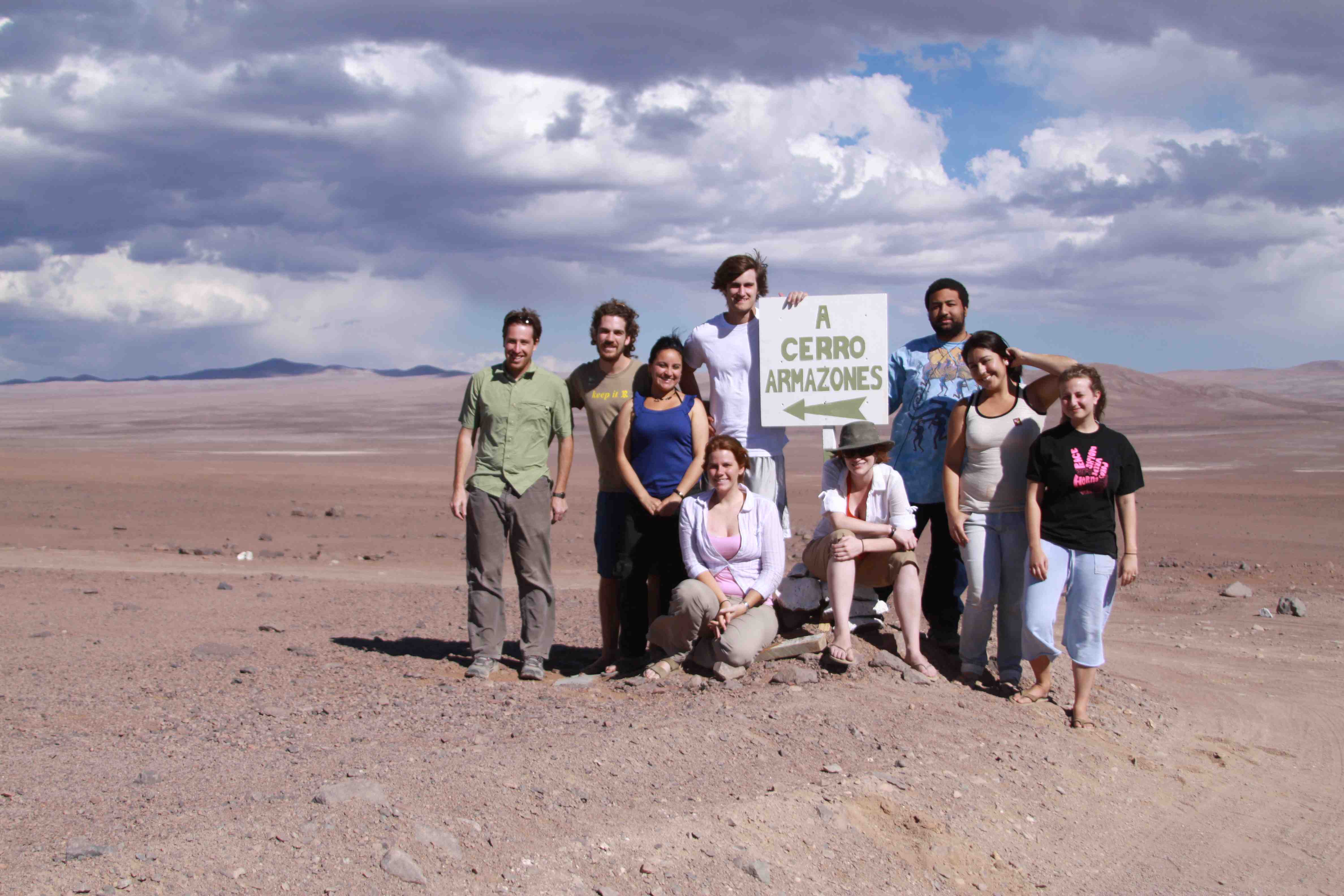 [58] [58] |
REU/PIA 2008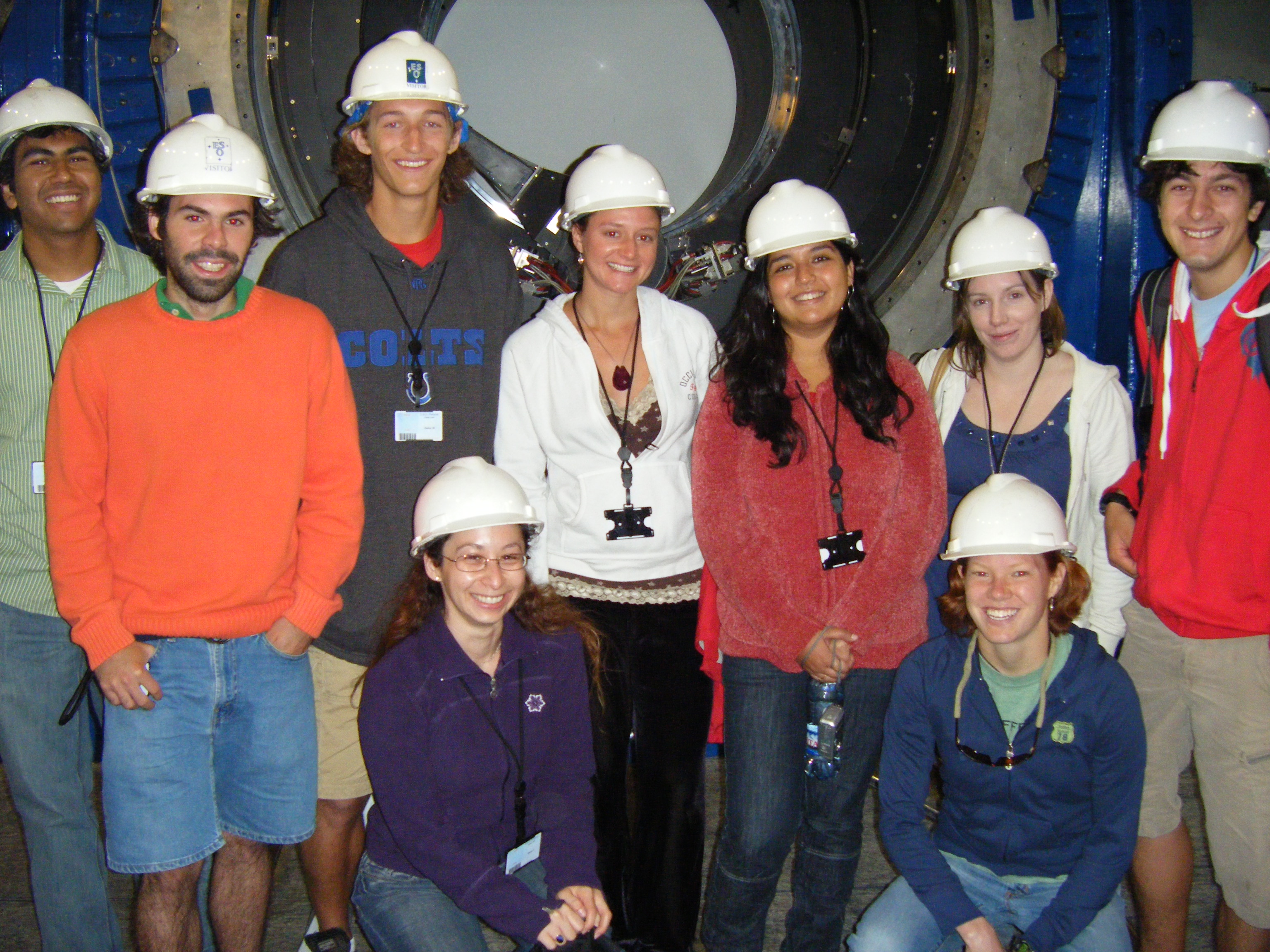 [59] [59] |
REU/PIA 2007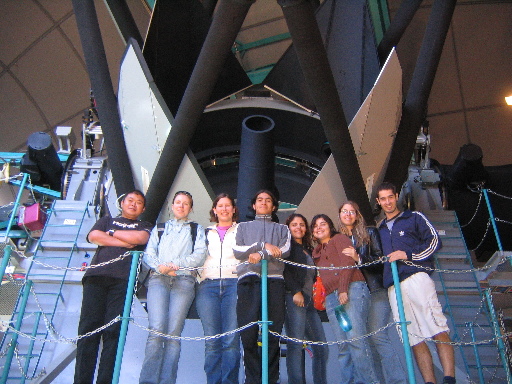 [60] [60] |
REU/PIA 2006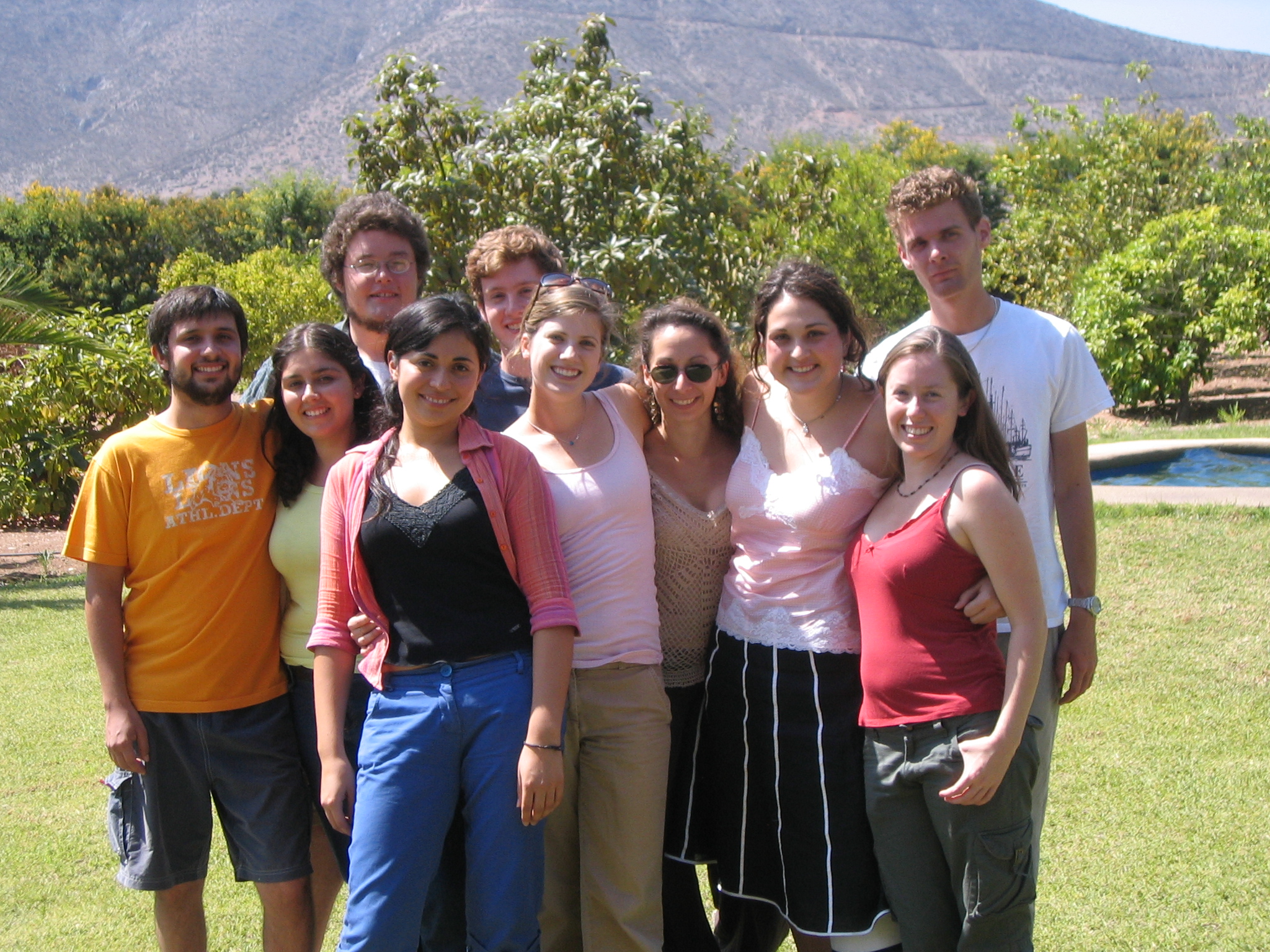 [61] [61] |
REU/PIA 2005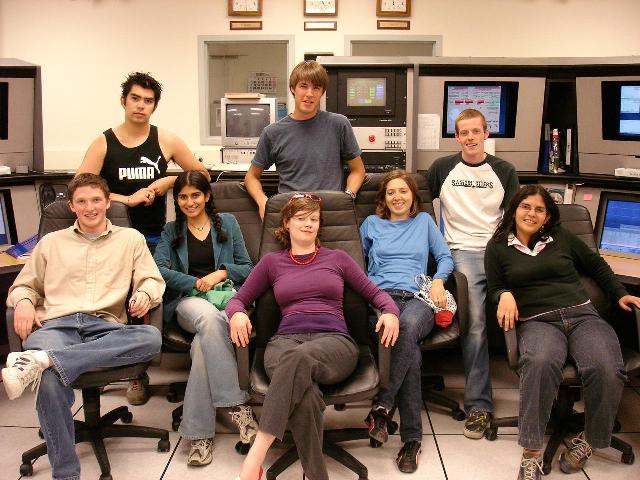 [62] [62] |
REU/PIA 2004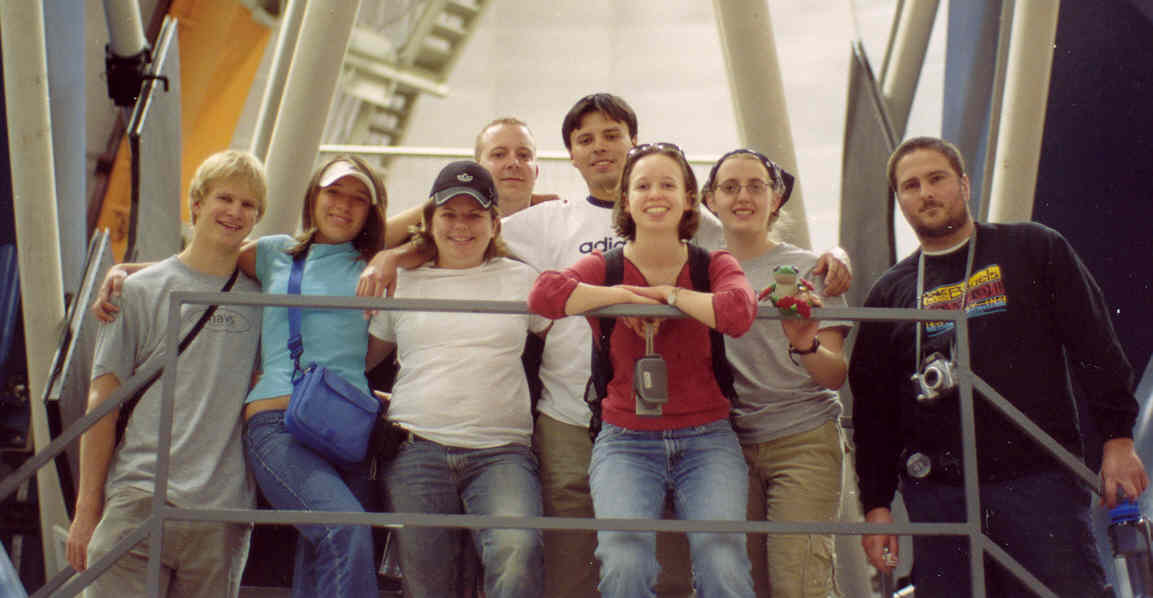 [63] [63] |
REU/PIA 2003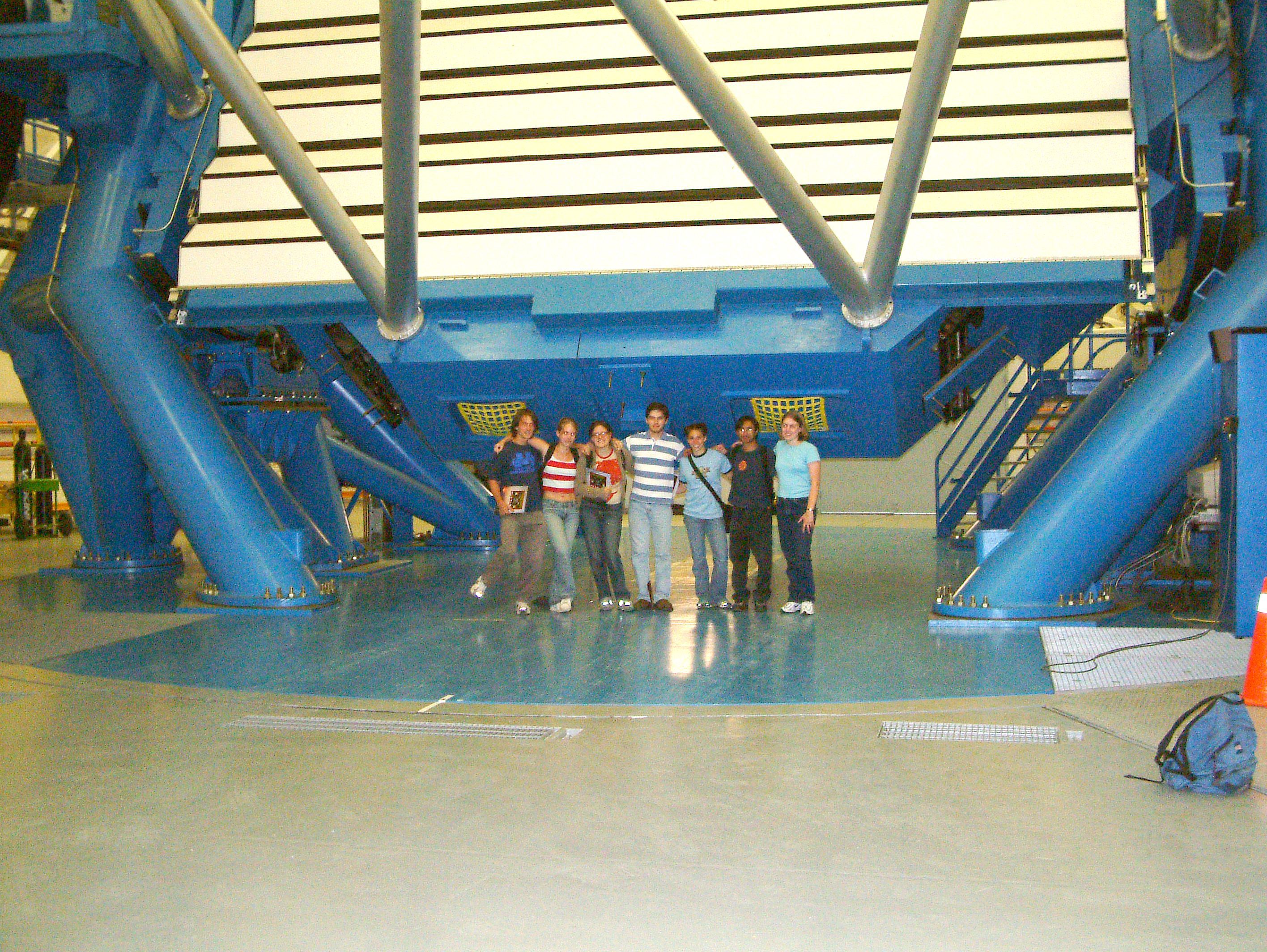 [64] [64] |
REU/PIA 2002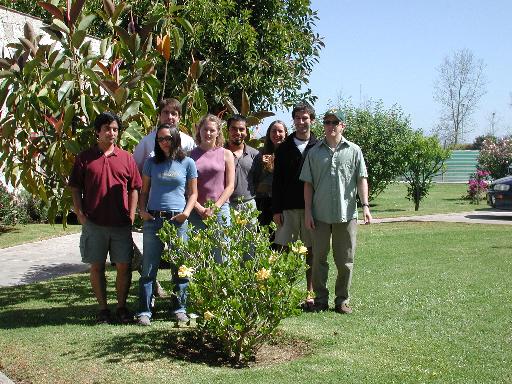 [65] [65] |
| REU/PIA 2001 [66] | REU/PIA 2000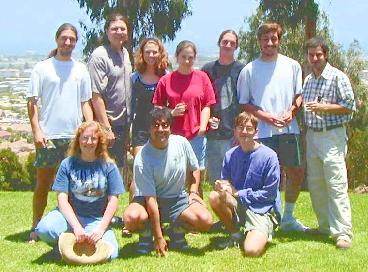 [67] [67] |
REU/PIA 1999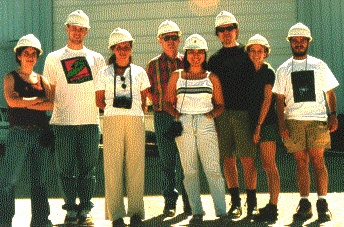 [68] [68] |
REU/PIA 1998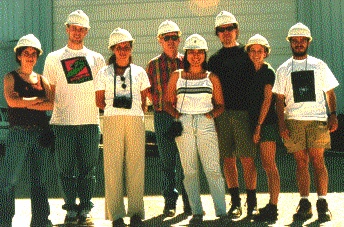 [69] [69] |
REU/PIA 1996 [70] | REU/PIA 1995 [71] |
REU Participants and Projects
| Student & Institution | Mentor(s) | Project Title | |
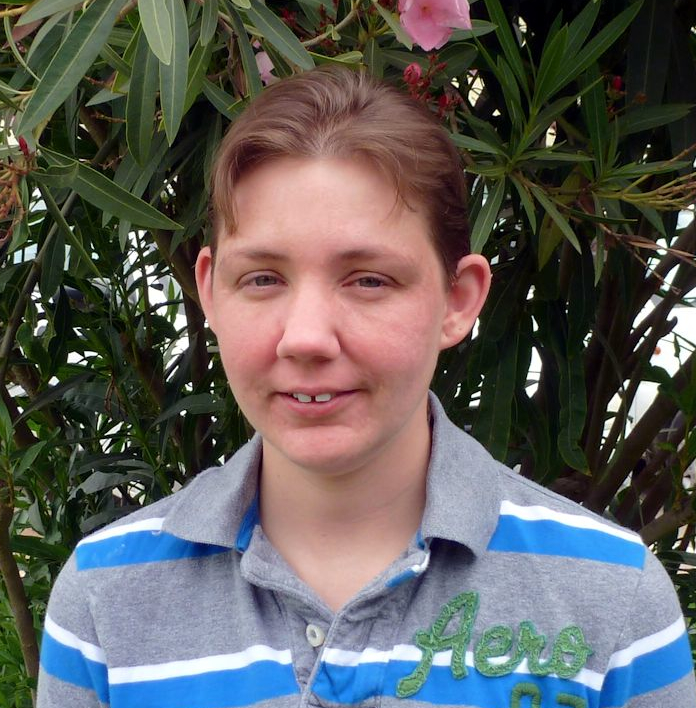 |
Melissa Butner Austin Peay State University |
Eric Mamajek (CTIO) |
Spectral Classification of Members of a Candidate Cluster in Telescopium |
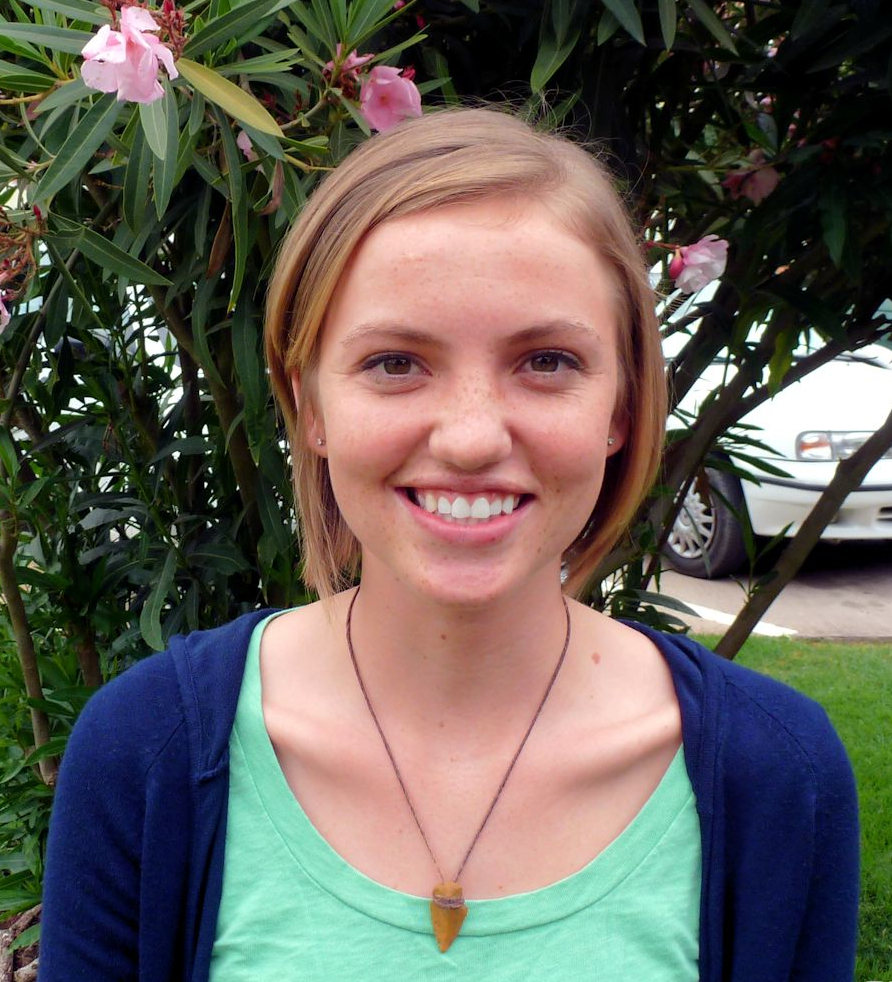 |
Kimberly Emig University of Hawai'i at Hilo |
Catherine Kaleida (CTIO) |
Simulated Star Clusters with MASSCLEAN: Testing a Stellar Grouping Selection Method |
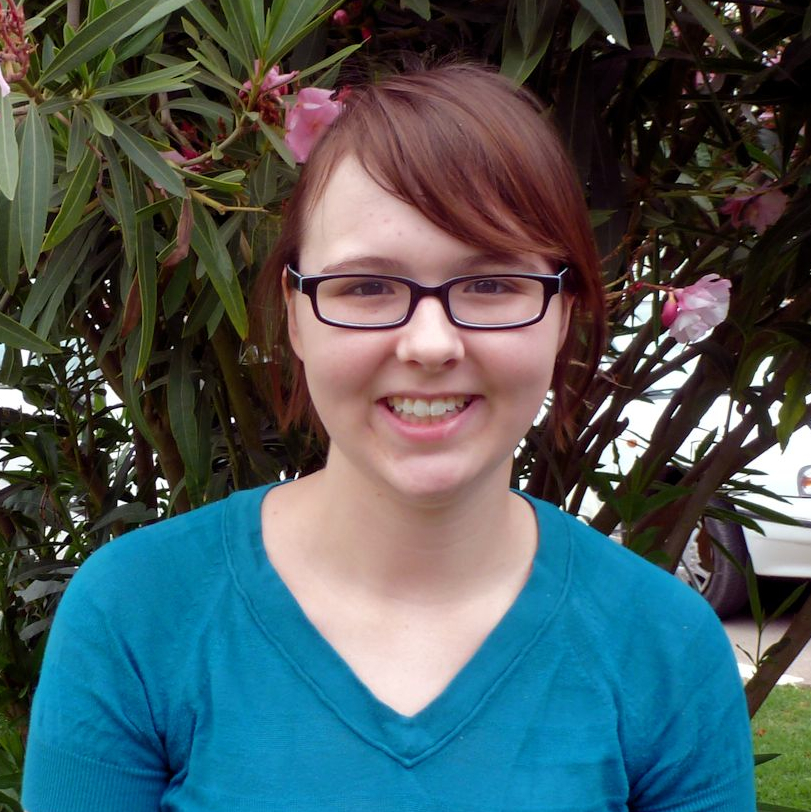 |
Christine Gilfrich St. Mary's College of Maryland |
Tiago Ribeiro (SOAR) |
Orbital Period of WD + M Binaries |
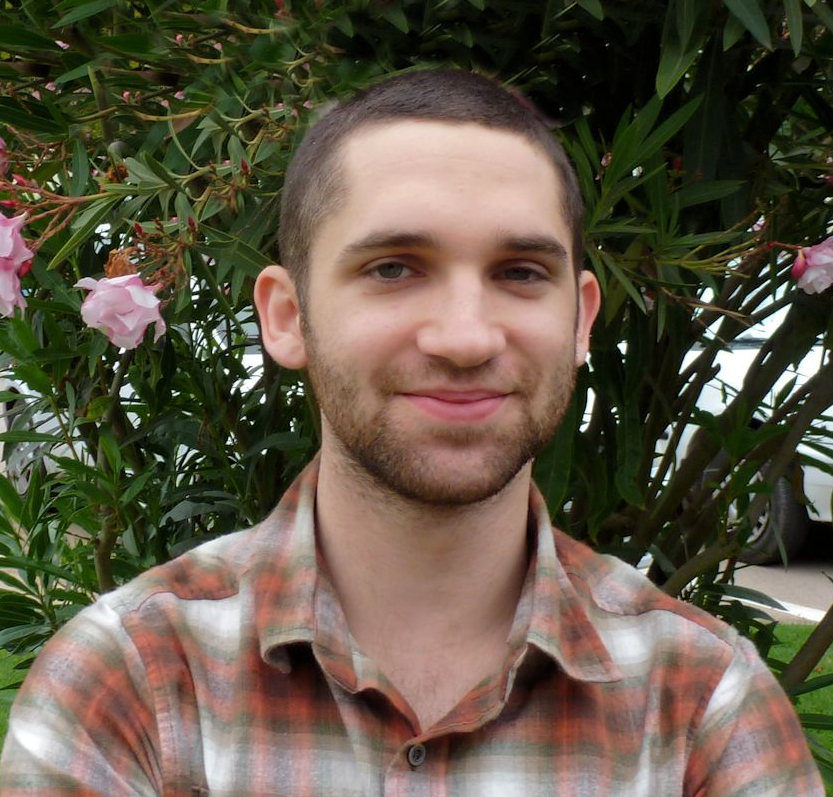 |
Bezia Laderman New York University |
Timothy Abbott (CTIO) |
Finding Periodicites of CP Eri |
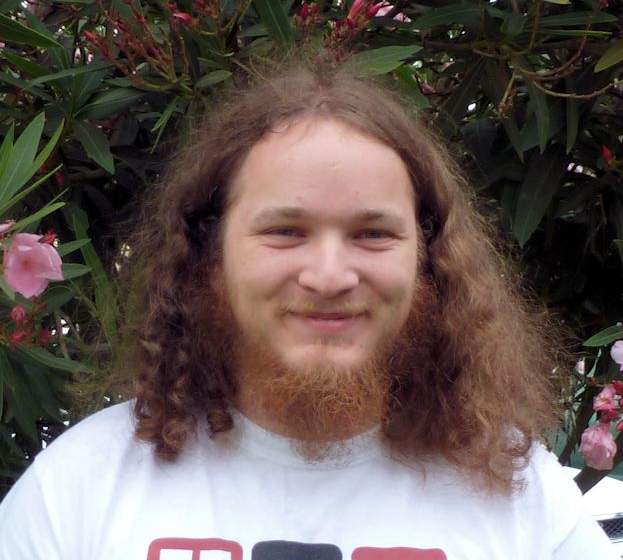 |
Samuel Meyer Harvard College |
Peter Pessev (Gemini) |
Expanding Integrated-Light Photometry of LMC Star Clusters in the NIR to Extremely Young Ages |
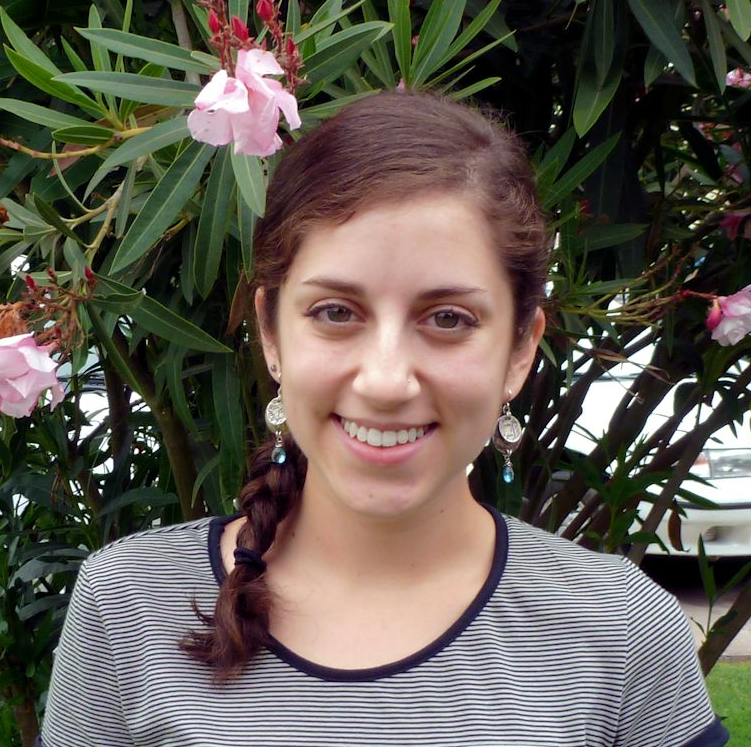 |
Clara Thomann Macalester University |
David James (CTIO) |
A Photometric and Spectroscopic Survey of Solar-type Stars in Open Cluster Collinder 70 |
PIA Participants and Projects
| Student & Institution | Mentor(s) | Project Title | |
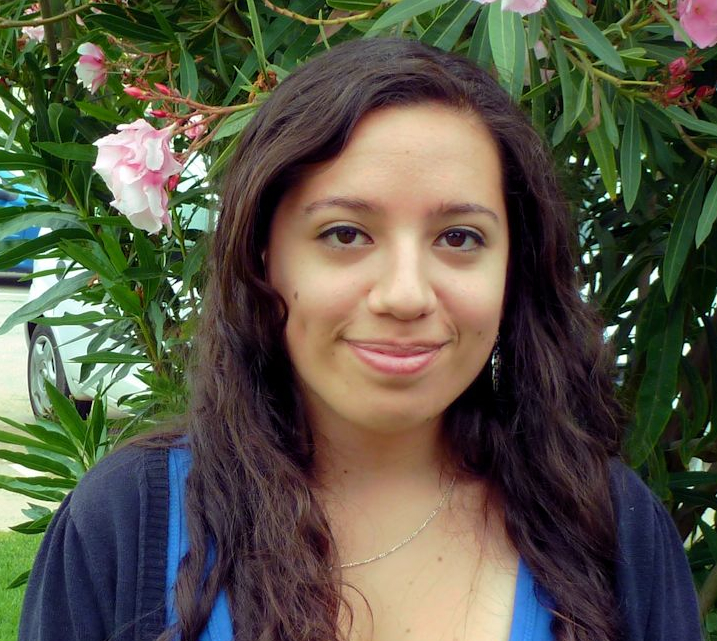 |
Mayte Alfaro Universidad de La Serena |
Percy Gomez (Gemini) | Analysis and reduction of ISPI images in the Near-IR of Abell 1882 Galaxy Cluster |
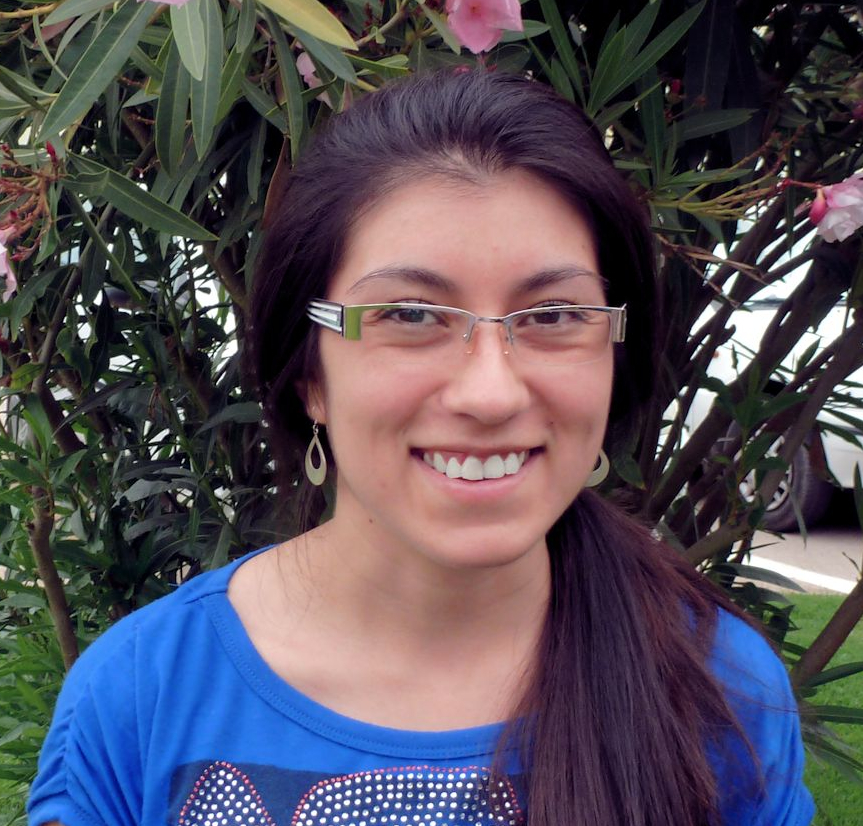 |
Odette Toloza Universidad de Valparaíso |
Nicole van der Bliek (CTIO) and Jackie Faherty (U. de Chile) | Searching for Nearby Brown Dwarfs |
Práctica Student Participant
| Student & Institution | Mentor(s) | Project Title | |
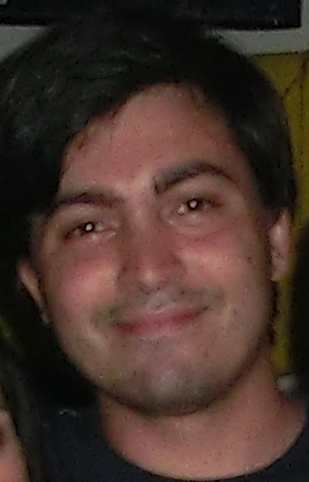 |
Fernando Caro Universidad de Chile |
Guillermo Cabrera (U. de Chile/LSST) |
Super-Resolution Image Reconstruction |
The dictionary of terms was started by the 2012 REU, PIA, and Práctica students at CTIO, in an effort to list the common technical terms used in astonomy that may not be found in a general English/Spanish dictionary. New words will be added by each year's summer students. If you would like to contribute some translations of commonly used words, or if you would like to suggest a better translation, please send and email to ctioreu AT ctio.noao.edu [72]. Entries with ??? next to them need confirmation.
| ENGLISH | SPANISH | YEAR ADDED |
|
accretion disk |
disco de accreción | 2015 |
|
camera |
cámara |
2012 |
|
cataclysmic |
cataclísmica |
2012 |
|
cluster |
cúmulo |
2012 |
|
code |
código |
2012 |
|
comet |
cometa |
2012 |
|
Dewar |
thermo cryogenico, Dewar | 2015 |
|
galaxy |
galaxia |
2012 |
|
Gaussian fit |
ajuste Gaussiano |
2012 |
|
gravity |
gravedad |
2012 |
|
histogram |
histograma |
2012 |
|
imager |
camera de imágenes??? |
2012 |
|
infrared |
infrarrojo |
2012 |
|
mass |
masa |
2012 |
|
metallicity |
metalicidad | 2015 |
|
methane |
metano |
2012 |
|
Milky Way |
Vía Láctea |
2012 |
|
nebula |
nebula |
2012 |
|
nova, novae |
nova, novae | 2014 |
|
period |
período |
2012 |
|
plate solution |
solución de lámina??? |
2012 |
|
point spread function |
función de distribucion de punto |
2012 |
|
program |
programa |
2012 |
|
rocket |
cohete |
2012 |
|
scattered light |
luz dispersada |
2012 |
|
science frames |
imágenes de ciencia |
2012 |
|
script |
script |
2012 |
|
shooting star |
estrella fugaz |
2012 |
|
solar |
solar |
2012 |
|
solar system |
sistema solar |
2012 |
|
spectra |
espectros |
2012 |
|
spectrum |
espectro |
2012 |
|
star |
estrella |
2012 |
|
statistics |
estadística |
2012 |
|
sun |
sol |
2012 |
|
ultraviolet |
ultravioleta |
2012 |
|
universe |
universario |
2012 |
|
variability |
variabilidad | 2015 |
|
wavelength |
longitud de onda |
2012 |
| 1995 | 1996 | 1998 | 1999 | 2000 | |
| 2001 | 2002 | 2003 | 2004 | 2005 | |
| 2006 | 2007 | 2008 | 2009 | 2010 | |
| 2011 | 2012 | 2013 | 2014 | ||
| 2016 |
| Name | School | Where are they now? *Year last updated in parentheses |
|||||||||||||||||||||||||||||||||||||||||||||||||||||||||||||||||||||||||||||||||||||||||||||||||||||||||||||||||||||||||||||||||||||||||||||||||||||||||||||||||||
2010 |
|||||||||||||||||||||||||||||||||||||||||||||||||||||||||||||||||||||||||||||||||||||||||||||||||||||||||||||||||||||||||||||||||||||||||||||||||||||||||||||||||||||
| Katy Acceta | Youngstown State University | Youngstown State University (2010) | |||||||||||||||||||||||||||||||||||||||||||||||||||||||||||||||||||||||||||||||||||||||||||||||||||||||||||||||||||||||||||||||||||||||||||||||||||||||||||||||||||
| Mason Carney | University of Maine | University of Maine (2010) | |||||||||||||||||||||||||||||||||||||||||||||||||||||||||||||||||||||||||||||||||||||||||||||||||||||||||||||||||||||||||||||||||||||||||||||||||||||||||||||||||||
| Li-Wi Hung | Ohio State University | Ohio State University (2010) | |||||||||||||||||||||||||||||||||||||||||||||||||||||||||||||||||||||||||||||||||||||||||||||||||||||||||||||||||||||||||||||||||||||||||||||||||||||||||||||||||||
| Melodie Kao | MIT | MIT (2010) | |||||||||||||||||||||||||||||||||||||||||||||||||||||||||||||||||||||||||||||||||||||||||||||||||||||||||||||||||||||||||||||||||||||||||||||||||||||||||||||||||||
| Amee Hennig (Salois) | University of Arkansas | English/Professional and Technical Writing student at Northern Arizona University (2015) | |||||||||||||||||||||||||||||||||||||||||||||||||||||||||||||||||||||||||||||||||||||||||||||||||||||||||||||||||||||||||||||||||||||||||||||||||||||||||||||||||||
| Conor Sayres | University of Washington | University of Washington (2010) | |||||||||||||||||||||||||||||||||||||||||||||||||||||||||||||||||||||||||||||||||||||||||||||||||||||||||||||||||||||||||||||||||||||||||||||||||||||||||||||||||||
| Eduardo Banados | Pontificia Universidad Católicade Chile | Pontificia Universidad Catolica de Chile (2010) | |||||||||||||||||||||||||||||||||||||||||||||||||||||||||||||||||||||||||||||||||||||||||||||||||||||||||||||||||||||||||||||||||||||||||||||||||||||||||||||||||||
| Yasna Ordones | Universidad de La Serena | Universidad de La Serena (2010) | |||||||||||||||||||||||||||||||||||||||||||||||||||||||||||||||||||||||||||||||||||||||||||||||||||||||||||||||||||||||||||||||||||||||||||||||||||||||||||||||||||
|
2009 |
|||||||||||||||||||||||||||||||||||||||||||||||||||||||||||||||||||||||||||||||||||||||||||||||||||||||||||||||||||||||||||||||||||||||||||||||||||||||||||||||||||||
| Tracy Becker | Lehigh University | Physics/Planteary Sciences Graduate Student, University of Central Florida (2014) | |||||||||||||||||||||||||||||||||||||||||||||||||||||||||||||||||||||||||||||||||||||||||||||||||||||||||||||||||||||||||||||||||||||||||||||||||||||||||||||||||||
| Shannon Dealaman | Clemson University | Rutgers University (2010) | |||||||||||||||||||||||||||||||||||||||||||||||||||||||||||||||||||||||||||||||||||||||||||||||||||||||||||||||||||||||||||||||||||||||||||||||||||||||||||||||||||
| Will Flanagan | University of Colorado - Boulder | University of Colorado - Boulder (2010) | |||||||||||||||||||||||||||||||||||||||||||||||||||||||||||||||||||||||||||||||||||||||||||||||||||||||||||||||||||||||||||||||||||||||||||||||||||||||||||||||||||
| Jordan Mirocha | Drake University | Astronomy Graduate Student, CU-Boulder (2010) | |||||||||||||||||||||||||||||||||||||||||||||||||||||||||||||||||||||||||||||||||||||||||||||||||||||||||||||||||||||||||||||||||||||||||||||||||||||||||||||||||||
| Benjamin Moore | Xavier University | Xavier University (2010) | |||||||||||||||||||||||||||||||||||||||||||||||||||||||||||||||||||||||||||||||||||||||||||||||||||||||||||||||||||||||||||||||||||||||||||||||||||||||||||||||||||
| Danielle Nielsen | Colby College Predoctoral research | Cerro Tololo Inter-American Observatory (2010) | |||||||||||||||||||||||||||||||||||||||||||||||||||||||||||||||||||||||||||||||||||||||||||||||||||||||||||||||||||||||||||||||||||||||||||||||||||||||||||||||||||
| Marcela Espinoza | Universidad de La Serena | Astrophysics Graduate Student, Universidad de La Laguna / Instituto de Astrofísica de Canarias (2010) |
|||||||||||||||||||||||||||||||||||||||||||||||||||||||||||||||||||||||||||||||||||||||||||||||||||||||||||||||||||||||||||||||||||||||||||||||||||||||||||||||||||
| Jacqueline Seron | Universidad de Concepcion | Astronomy Graduate Student Universidad de La Serena (2014) |
|||||||||||||||||||||||||||||||||||||||||||||||||||||||||||||||||||||||||||||||||||||||||||||||||||||||||||||||||||||||||||||||||||||||||||||||||||||||||||||||||||
|
2008 |
|||||||||||||||||||||||||||||||||||||||||||||||||||||||||||||||||||||||||||||||||||||||||||||||||||||||||||||||||||||||||||||||||||||||||||||||||||||||||||||||||||||
| Emma Crow-Willard | Occidental College | Occidental College (2010) | |||||||||||||||||||||||||||||||||||||||||||||||||||||||||||||||||||||||||||||||||||||||||||||||||||||||||||||||||||||||||||||||||||||||||||||||||||||||||||||||||||
| Emily Lynch | Dartmouth College | Dartmouth College (2010) | |||||||||||||||||||||||||||||||||||||||||||||||||||||||||||||||||||||||||||||||||||||||||||||||||||||||||||||||||||||||||||||||||||||||||||||||||||||||||||||||||||
| Peter Mares | Cornell University | Cornell University (2010) | |||||||||||||||||||||||||||||||||||||||||||||||||||||||||||||||||||||||||||||||||||||||||||||||||||||||||||||||||||||||||||||||||||||||||||||||||||||||||||||||||||
| Amit Misra | Case Western Reserve University | Case Western Reserve University (2010) | |||||||||||||||||||||||||||||||||||||||||||||||||||||||||||||||||||||||||||||||||||||||||||||||||||||||||||||||||||||||||||||||||||||||||||||||||||||||||||||||||||
| Adele Plunkett | Middlebury College | Middlebury College (2010) | |||||||||||||||||||||||||||||||||||||||||||||||||||||||||||||||||||||||||||||||||||||||||||||||||||||||||||||||||||||||||||||||||||||||||||||||||||||||||||||||||||
| Matt Schenker | Dartmouth University | Astronomy Graduate Student, Caltech (2010) | |||||||||||||||||||||||||||||||||||||||||||||||||||||||||||||||||||||||||||||||||||||||||||||||||||||||||||||||||||||||||||||||||||||||||||||||||||||||||||||||||||
| Macarena Campos | Universidad de Concepción | Universidad de Concepcion (2010) | |||||||||||||||||||||||||||||||||||||||||||||||||||||||||||||||||||||||||||||||||||||||||||||||||||||||||||||||||||||||||||||||||||||||||||||||||||||||||||||||||||
| Regis Cartier | Universidad de Chile | Astronomy Graduate Student, Universidad de Chile (2010) |
|||||||||||||||||||||||||||||||||||||||||||||||||||||||||||||||||||||||||||||||||||||||||||||||||||||||||||||||||||||||||||||||||||||||||||||||||||||||||||||||||||
|
2007 |
|||||||||||||||||||||||||||||||||||||||||||||||||||||||||||||||||||||||||||||||||||||||||||||||||||||||||||||||||||||||||||||||||||||||||||||||||||||||||||||||||||||
| Rachel Anderson | University of Wisconsin, Eau Claire | Astronomy Graduate Student, McMaster University (2010) |
|||||||||||||||||||||||||||||||||||||||||||||||||||||||||||||||||||||||||||||||||||||||||||||||||||||||||||||||||||||||||||||||||||||||||||||||||||||||||||||||||||
| Cassy Davison | Norfolk State University | Astronomy Graduate Student, Georgia State University (2010) |
|||||||||||||||||||||||||||||||||||||||||||||||||||||||||||||||||||||||||||||||||||||||||||||||||||||||||||||||||||||||||||||||||||||||||||||||||||||||||||||||||||
| Stephanie Golmon | Principia College Aerospace Engineering | Graduate Student, CU-Boulder (2010) | |||||||||||||||||||||||||||||||||||||||||||||||||||||||||||||||||||||||||||||||||||||||||||||||||||||||||||||||||||||||||||||||||||||||||||||||||||||||||||||||||||
| Daniel Harsono | University of California Los Angeles | Astronomy Graduate Student, Leiden Universiteit-Sterrewacht (2010) |
|||||||||||||||||||||||||||||||||||||||||||||||||||||||||||||||||||||||||||||||||||||||||||||||||||||||||||||||||||||||||||||||||||||||||||||||||||||||||||||||||||
| Scott Henderson | Lewis & Clark College | Lewis & Clark College (2010) | |||||||||||||||||||||||||||||||||||||||||||||||||||||||||||||||||||||||||||||||||||||||||||||||||||||||||||||||||||||||||||||||||||||||||||||||||||||||||||||||||||
| Aisha Mahmoud | University of Puerto Rico, Mayaguez | University of Puerto Rico, Mayaguez (2010) | |||||||||||||||||||||||||||||||||||||||||||||||||||||||||||||||||||||||||||||||||||||||||||||||||||||||||||||||||||||||||||||||||||||||||||||||||||||||||||||||||||
| Rodrigo Hinojosa | Universidad Catolica del Norte, Antofagasta | Astrophysics Graduate Student, Universidad de La Laguna / Instituto de Astrofísica de Canarias (2010) |
|||||||||||||||||||||||||||||||||||||||||||||||||||||||||||||||||||||||||||||||||||||||||||||||||||||||||||||||||||||||||||||||||||||||||||||||||||||||||||||||||||
| Claudia Araya | Pontificia U. Católica de Chile | Pontificia U. Católica de Chile (2010) | |||||||||||||||||||||||||||||||||||||||||||||||||||||||||||||||||||||||||||||||||||||||||||||||||||||||||||||||||||||||||||||||||||||||||||||||||||||||||||||||||||
|
2006 |
|||||||||||||||||||||||||||||||||||||||||||||||||||||||||||||||||||||||||||||||||||||||||||||||||||||||||||||||||||||||||||||||||||||||||||||||||||||||||||||||||||||
| Matthew Klimek | Rutgers University | Physics Graduate Student, University of Texas, Austin (2010) |
|||||||||||||||||||||||||||||||||||||||||||||||||||||||||||||||||||||||||||||||||||||||||||||||||||||||||||||||||||||||||||||||||||||||||||||||||||||||||||||||||||
| Andrew Newman | Washington University in St. Louis | Astronomy Graduate Student, Caltech (2010) | |||||||||||||||||||||||||||||||||||||||||||||||||||||||||||||||||||||||||||||||||||||||||||||||||||||||||||||||||||||||||||||||||||||||||||||||||||||||||||||||||||
| Gwen Rudie | Dartmouth College (Goldwater fellow) | Astronomy Graduate Student, Caltech (2010) | |||||||||||||||||||||||||||||||||||||||||||||||||||||||||||||||||||||||||||||||||||||||||||||||||||||||||||||||||||||||||||||||||||||||||||||||||||||||||||||||||||
| Anne Sweet | Macalester College | Fullbright Scholar (Brazil) (2010) | |||||||||||||||||||||||||||||||||||||||||||||||||||||||||||||||||||||||||||||||||||||||||||||||||||||||||||||||||||||||||||||||||||||||||||||||||||||||||||||||||||
| Brad Tucker | Notre Dame | Research Fellow at The Australian National University and UC Berkeley (2014) | |||||||||||||||||||||||||||||||||||||||||||||||||||||||||||||||||||||||||||||||||||||||||||||||||||||||||||||||||||||||||||||||||||||||||||||||||||||||||||||||||||
| Allison Campbell (Widhalm) | University of Southern California | Energy Specialist at the Redwood Coast Energy Authority (2014) | |||||||||||||||||||||||||||||||||||||||||||||||||||||||||||||||||||||||||||||||||||||||||||||||||||||||||||||||||||||||||||||||||||||||||||||||||||||||||||||||||||
| María José Cordero | Pontificia Universidad Católica de Chile | Astronomy Graduate Student, University of Indiana- Bloomington (2010) |
|||||||||||||||||||||||||||||||||||||||||||||||||||||||||||||||||||||||||||||||||||||||||||||||||||||||||||||||||||||||||||||||||||||||||||||||||||||||||||||||||||
| Renée Mateluna | Universidad de Concepción | Physics Graduate Student, Universidad de Concepción (2010) |
|||||||||||||||||||||||||||||||||||||||||||||||||||||||||||||||||||||||||||||||||||||||||||||||||||||||||||||||||||||||||||||||||||||||||||||||||||||||||||||||||||
| Guillermo Damke | Universidad de La Serena | Astronomy Graduate Student, University of Virginia (2010) |
|||||||||||||||||||||||||||||||||||||||||||||||||||||||||||||||||||||||||||||||||||||||||||||||||||||||||||||||||||||||||||||||||||||||||||||||||||||||||||||||||||
|
2005 |
|||||||||||||||||||||||||||||||||||||||||||||||||||||||||||||||||||||||||||||||||||||||||||||||||||||||||||||||||||||||||||||||||||||||||||||||||||||||||||||||||||||
| Sonia Aggarwal | Haverford College | "Clean-Tech" public relations, Antenna Group (2010) |
|||||||||||||||||||||||||||||||||||||||||||||||||||||||||||||||||||||||||||||||||||||||||||||||||||||||||||||||||||||||||||||||||||||||||||||||||||||||||||||||||||
| Claire Bendersky | Mt. Holyoke College | Geology Fullbright Fellow, Museum National d'Histoire Naturelle, France (2010) |
|||||||||||||||||||||||||||||||||||||||||||||||||||||||||||||||||||||||||||||||||||||||||||||||||||||||||||||||||||||||||||||||||||||||||||||||||||||||||||||||||||
| Ben Brandvig | University of Washington | Business process analyst, Boeing (2010) | |||||||||||||||||||||||||||||||||||||||||||||||||||||||||||||||||||||||||||||||||||||||||||||||||||||||||||||||||||||||||||||||||||||||||||||||||||||||||||||||||||
| AJ Carver | University of Wisconsin-Madson | ESO (Chile) (Director General Discretionary Fund Intern) (2010) |
|||||||||||||||||||||||||||||||||||||||||||||||||||||||||||||||||||||||||||||||||||||||||||||||||||||||||||||||||||||||||||||||||||||||||||||||||||||||||||||||||||
| Betsy Mills | Indiana University | Astronomy Graduate Student, UCLA (2010) | |||||||||||||||||||||||||||||||||||||||||||||||||||||||||||||||||||||||||||||||||||||||||||||||||||||||||||||||||||||||||||||||||||||||||||||||||||||||||||||||||||
| Dylan Semler | Macalester College | ||||||||||||||||||||||||||||||||||||||||||||||||||||||||||||||||||||||||||||||||||||||||||||||||||||||||||||||||||||||||||||||||||||||||||||||||||||||||||||||||||||
| Laura Pérez | Universidad de Chile | Astronomy Graduate Student, Caltech (2010) | |||||||||||||||||||||||||||||||||||||||||||||||||||||||||||||||||||||||||||||||||||||||||||||||||||||||||||||||||||||||||||||||||||||||||||||||||||||||||||||||||||
| Omar Valdivia | Universidad de Concepción | Physics Graduate Student, Universidad de Concepción (2010) | |||||||||||||||||||||||||||||||||||||||||||||||||||||||||||||||||||||||||||||||||||||||||||||||||||||||||||||||||||||||||||||||||||||||||||||||||||||||||||||||||||
|
2004 |
|||||||||||||||||||||||||||||||||||||||||||||||||||||||||||||||||||||||||||||||||||||||||||||||||||||||||||||||||||||||||||||||||||||||||||||||||||||||||||||||||||||
| Rebecca Barlow | Mt. Holyoke College | Graduate Student, Physics Department, University of New Hampshire (2010) |
|||||||||||||||||||||||||||||||||||||||||||||||||||||||||||||||||||||||||||||||||||||||||||||||||||||||||||||||||||||||||||||||||||||||||||||||||||||||||||||||||||
| Luke Galli | Colorado College | Science Teacher, Teach for America | |||||||||||||||||||||||||||||||||||||||||||||||||||||||||||||||||||||||||||||||||||||||||||||||||||||||||||||||||||||||||||||||||||||||||||||||||||||||||||||||||||
| Alice Globus | Wells College | System and Facilities Manager, Van Vleck Observatory, Wesleyan (2010) | |||||||||||||||||||||||||||||||||||||||||||||||||||||||||||||||||||||||||||||||||||||||||||||||||||||||||||||||||||||||||||||||||||||||||||||||||||||||||||||||||||
| Ethan Knox | Humboldt State University | Humboldt State University (2010) | |||||||||||||||||||||||||||||||||||||||||||||||||||||||||||||||||||||||||||||||||||||||||||||||||||||||||||||||||||||||||||||||||||||||||||||||||||||||||||||||||||
| Melissa Rice | Wellesley College | Astronomy Graduate Student, Cornell University (2010) |
|||||||||||||||||||||||||||||||||||||||||||||||||||||||||||||||||||||||||||||||||||||||||||||||||||||||||||||||||||||||||||||||||||||||||||||||||||||||||||||||||||
| Kyle Walker | Ohio State University | Astronomy Graduate Student, U. Toledo (2010) |
|||||||||||||||||||||||||||||||||||||||||||||||||||||||||||||||||||||||||||||||||||||||||||||||||||||||||||||||||||||||||||||||||||||||||||||||||||||||||||||||||||
| Javier Fuentes | Universidad de La Serena | Las Campanas Observatory, Operator Irenee du Pont Telescope (2010) |
|||||||||||||||||||||||||||||||||||||||||||||||||||||||||||||||||||||||||||||||||||||||||||||||||||||||||||||||||||||||||||||||||||||||||||||||||||||||||||||||||||
| Bárbara Rojas Alaya | Universidad de Chile | Astronomy Graduate Student, Cornell University (2010) |
|||||||||||||||||||||||||||||||||||||||||||||||||||||||||||||||||||||||||||||||||||||||||||||||||||||||||||||||||||||||||||||||||||||||||||||||||||||||||||||||||||
|
2003 |
|||||||||||||||||||||||||||||||||||||||||||||||||||||||||||||||||||||||||||||||||||||||||||||||||||||||||||||||||||||||||||||||||||||||||||||||||||||||||||||||||||||
| Carey Borghi | University of Wyoming | Systems Engineer, Lockheed Martin Space Systems (2010) |
|||||||||||||||||||||||||||||||||||||||||||||||||||||||||||||||||||||||||||||||||||||||||||||||||||||||||||||||||||||||||||||||||||||||||||||||||||||||||||||||||||
| Katherine Guenthner | University of Texas at Austin | Graduate Student, U. Texas & Predoc, Harvard-Smithsonian (2010) |
|||||||||||||||||||||||||||||||||||||||||||||||||||||||||||||||||||||||||||||||||||||||||||||||||||||||||||||||||||||||||||||||||||||||||||||||||||||||||||||||||||
| Ryan Peterson | Lawrence University | Astronomy PhD., Lawrence University (2010) | |||||||||||||||||||||||||||||||||||||||||||||||||||||||||||||||||||||||||||||||||||||||||||||||||||||||||||||||||||||||||||||||||||||||||||||||||||||||||||||||||||
| Lara Pierpoint | University of California at Los Angeles | PhD Student, Energy Systems Engineering, MIT (2010) |
|||||||||||||||||||||||||||||||||||||||||||||||||||||||||||||||||||||||||||||||||||||||||||||||||||||||||||||||||||||||||||||||||||||||||||||||||||||||||||||||||||
| Rebecca Wilcox | University of Washington | Masters of Architecture Student, University of Washington (2010) |
|||||||||||||||||||||||||||||||||||||||||||||||||||||||||||||||||||||||||||||||||||||||||||||||||||||||||||||||||||||||||||||||||||||||||||||||||||||||||||||||||||
| Rodrigo Fernandez | Pontificia Universidad Católica de Chile, Santiago | Astronomy PhD student, U. Toronto (2010) |
|||||||||||||||||||||||||||||||||||||||||||||||||||||||||||||||||||||||||||||||||||||||||||||||||||||||||||||||||||||||||||||||||||||||||||||||||||||||||||||||||||
| Abner Zapata | Universidad de Concepción | Astronomy Graduate Student, Universidad de Concepción (2010) |
|||||||||||||||||||||||||||||||||||||||||||||||||||||||||||||||||||||||||||||||||||||||||||||||||||||||||||||||||||||||||||||||||||||||||||||||||||||||||||||||||||
|
2002 |
|||||||||||||||||||||||||||||||||||||||||||||||||||||||||||||||||||||||||||||||||||||||||||||||||||||||||||||||||||||||||||||||||||||||||||||||||||||||||||||||||||||
| Pamela Baca | University of Colorado, Denver | OCIW (2010) | |||||||||||||||||||||||||||||||||||||||||||||||||||||||||||||||||||||||||||||||||||||||||||||||||||||||||||||||||||||||||||||||||||||||||||||||||||||||||||||||||||
| Jeffrey Carlin | San Francisco State University | Graduate Student, University of Virginia (2010) |
|||||||||||||||||||||||||||||||||||||||||||||||||||||||||||||||||||||||||||||||||||||||||||||||||||||||||||||||||||||||||||||||||||||||||||||||||||||||||||||||||||
| Thomas (Tucker) Freismuth | College of Charleston | Instructor, City College of Charleston (2010) | |||||||||||||||||||||||||||||||||||||||||||||||||||||||||||||||||||||||||||||||||||||||||||||||||||||||||||||||||||||||||||||||||||||||||||||||||||||||||||||||||||
| Colette Salyk | Mass. Institute of Technology | Graduate Student, Geological and Planetary Sciences, Caltech (2010) |
|||||||||||||||||||||||||||||||||||||||||||||||||||||||||||||||||||||||||||||||||||||||||||||||||||||||||||||||||||||||||||||||||||||||||||||||||||||||||||||||||||
| Marcelo Mora | Pontificia Universidad Católica de Chile, Santiago | Graduate Student, International Max-Plank Research School on Astrophysics, Munich (2010) | |||||||||||||||||||||||||||||||||||||||||||||||||||||||||||||||||||||||||||||||||||||||||||||||||||||||||||||||||||||||||||||||||||||||||||||||||||||||||||||||||||
| Sergio Vera | Pontificia Universidad Católica de Chile, Santiago | Telescope Operator, Magellan (2010) | |||||||||||||||||||||||||||||||||||||||||||||||||||||||||||||||||||||||||||||||||||||||||||||||||||||||||||||||||||||||||||||||||||||||||||||||||||||||||||||||||||
| Miguel Verdugo | Pontificia Universidad Católica de Chile, Santiago | Postdoc, Goettingen (2010) | |||||||||||||||||||||||||||||||||||||||||||||||||||||||||||||||||||||||||||||||||||||||||||||||||||||||||||||||||||||||||||||||||||||||||||||||||||||||||||||||||||
| Amber Young | Middlebury College, Vermont | Graduate Student, Optical Science, University of Arizona (2010) |
|||||||||||||||||||||||||||||||||||||||||||||||||||||||||||||||||||||||||||||||||||||||||||||||||||||||||||||||||||||||||||||||||||||||||||||||||||||||||||||||||||
|
2001 |
|||||||||||||||||||||||||||||||||||||||||||||||||||||||||||||||||||||||||||||||||||||||||||||||||||||||||||||||||||||||||||||||||||||||||||||||||||||||||||||||||||||
| Gabriel Bramme | Williams College, Massachusetts | Astronomy Graduate Student, Yale (2010) | |||||||||||||||||||||||||||||||||||||||||||||||||||||||||||||||||||||||||||||||||||||||||||||||||||||||||||||||||||||||||||||||||||||||||||||||||||||||||||||||||||
| Kathy Cooksey | Valparaiso University, Indiana | Astronomy Graduate Student, UC Santa Cruz (2010) | |||||||||||||||||||||||||||||||||||||||||||||||||||||||||||||||||||||||||||||||||||||||||||||||||||||||||||||||||||||||||||||||||||||||||||||||||||||||||||||||||||
| Shadrian Strong | College of Charleston, South Carolina | Astronomy Graduate Student, U. Texas Austin | |||||||||||||||||||||||||||||||||||||||||||||||||||||||||||||||||||||||||||||||||||||||||||||||||||||||||||||||||||||||||||||||||||||||||||||||||||||||||||||||||||
| Rodolfo Montez | University of Texas, Austin | Graduate Student, Center for Imaging Science, University of Rochester (2010) | |||||||||||||||||||||||||||||||||||||||||||||||||||||||||||||||||||||||||||||||||||||||||||||||||||||||||||||||||||||||||||||||||||||||||||||||||||||||||||||||||||
| Jorge Cuadra | Pontificia Universidad Católica de Chile, Santiago | Astrophysics Postdoc, MPA Garching (2010) | |||||||||||||||||||||||||||||||||||||||||||||||||||||||||||||||||||||||||||||||||||||||||||||||||||||||||||||||||||||||||||||||||||||||||||||||||||||||||||||||||||
| Erika Labbe | Pontificia Universidad Católica de Chile, Santiago | Astronomy Professor, Universidad del Desarrollo (Part-time) (2010) |
|||||||||||||||||||||||||||||||||||||||||||||||||||||||||||||||||||||||||||||||||||||||||||||||||||||||||||||||||||||||||||||||||||||||||||||||||||||||||||||||||||
| Constanza Araujo | Universidad Católica de Valparaiso | Research Scientist, ESO Garching (2010) | |||||||||||||||||||||||||||||||||||||||||||||||||||||||||||||||||||||||||||||||||||||||||||||||||||||||||||||||||||||||||||||||||||||||||||||||||||||||||||||||||||
|
2000 |
|||||||||||||||||||||||||||||||||||||||||||||||||||||||||||||||||||||||||||||||||||||||||||||||||||||||||||||||||||||||||||||||||||||||||||||||||||||||||||||||||||||
| Melanie Blackburn | West Virginia University | Programmer Analyst, NASA Goddard (2010) | |||||||||||||||||||||||||||||||||||||||||||||||||||||||||||||||||||||||||||||||||||||||||||||||||||||||||||||||||||||||||||||||||||||||||||||||||||||||||||||||||||
| John Bright | Mesa State College, Colorado | Harvard Smithsonian Center for Astrophysics (2010) | |||||||||||||||||||||||||||||||||||||||||||||||||||||||||||||||||||||||||||||||||||||||||||||||||||||||||||||||||||||||||||||||||||||||||||||||||||||||||||||||||||
| Ben Johnson | University of California, Los Angeles | Postdoc, Institute for Astronomy, Cambridge (2010) | |||||||||||||||||||||||||||||||||||||||||||||||||||||||||||||||||||||||||||||||||||||||||||||||||||||||||||||||||||||||||||||||||||||||||||||||||||||||||||||||||||
| Tanya Tavenner | University of Washington | Graduate Student, New Mexico State University (2010) | |||||||||||||||||||||||||||||||||||||||||||||||||||||||||||||||||||||||||||||||||||||||||||||||||||||||||||||||||||||||||||||||||||||||||||||||||||||||||||||||||||
| Axel Bonacic | Pontificia Universidad Católica de Chile, Santiago | Astronomy Graduate Student, Utrecht (2010) | |||||||||||||||||||||||||||||||||||||||||||||||||||||||||||||||||||||||||||||||||||||||||||||||||||||||||||||||||||||||||||||||||||||||||||||||||||||||||||||||||||
| Juan Seguel | Universidad de Concepción | Assistant Engineer, Cerro Tololo Inter-American Observatory (2014) |
|||||||||||||||||||||||||||||||||||||||||||||||||||||||||||||||||||||||||||||||||||||||||||||||||||||||||||||||||||||||||||||||||||||||||||||||||||||||||||||||||||
| Felipe Daruich | Universidad Católica de Valparaiso | ||||||||||||||||||||||||||||||||||||||||||||||||||||||||||||||||||||||||||||||||||||||||||||||||||||||||||||||||||||||||||||||||||||||||||||||||||||||||||||||||||||
| Mario Caceres | Universidad Técnica de Federico Santa María, Valparaiso | ||||||||||||||||||||||||||||||||||||||||||||||||||||||||||||||||||||||||||||||||||||||||||||||||||||||||||||||||||||||||||||||||||||||||||||||||||||||||||||||||||||
|
1999 |
|||||||||||||||||||||||||||||||||||||||||||||||||||||||||||||||||||||||||||||||||||||||||||||||||||||||||||||||||||||||||||||||||||||||||||||||||||||||||||||||||||||
| Jeremy Buss | University of Wisconsin, Oshkosh | Industry (computers) (2010) | |||||||||||||||||||||||||||||||||||||||||||||||||||||||||||||||||||||||||||||||||||||||||||||||||||||||||||||||||||||||||||||||||||||||||||||||||||||||||||||||||||
| Jenny Greene | Yale University | Princeton: Annie Jump Cannon Award 2008 (2010) | |||||||||||||||||||||||||||||||||||||||||||||||||||||||||||||||||||||||||||||||||||||||||||||||||||||||||||||||||||||||||||||||||||||||||||||||||||||||||||||||||||
| Jessica Kim-Quijano | Towson University | Science Mission Office, StScI (2010) | |||||||||||||||||||||||||||||||||||||||||||||||||||||||||||||||||||||||||||||||||||||||||||||||||||||||||||||||||||||||||||||||||||||||||||||||||||||||||||||||||||
| Alicia Soderberg | Bates College | Princeton (Hubble fellow), Annie Jump Cannon Award 2009 (2010) |
|||||||||||||||||||||||||||||||||||||||||||||||||||||||||||||||||||||||||||||||||||||||||||||||||||||||||||||||||||||||||||||||||||||||||||||||||||||||||||||||||||
| Ricardo Demarco | Pontificia Universidad Católica de Chile, Santiago | European Southern Observatory (2010) | |||||||||||||||||||||||||||||||||||||||||||||||||||||||||||||||||||||||||||||||||||||||||||||||||||||||||||||||||||||||||||||||||||||||||||||||||||||||||||||||||||
| Cecil Acevedo | Universidad Técnica de Federico Santa María, Valparaiso | ||||||||||||||||||||||||||||||||||||||||||||||||||||||||||||||||||||||||||||||||||||||||||||||||||||||||||||||||||||||||||||||||||||||||||||||||||||||||||||||||||||
| Mario Caceres | Universidad Técnica de Federico Santa María, Valparaiso | ||||||||||||||||||||||||||||||||||||||||||||||||||||||||||||||||||||||||||||||||||||||||||||||||||||||||||||||||||||||||||||||||||||||||||||||||||||||||||||||||||||
|
1998 |
|||||||||||||||||||||||||||||||||||||||||||||||||||||||||||||||||||||||||||||||||||||||||||||||||||||||||||||||||||||||||||||||||||||||||||||||||||||||||||||||||||||
| Jomel Atienza-Rosel | California State University, Los Angeles | ||||||||||||||||||||||||||||||||||||||||||||||||||||||||||||||||||||||||||||||||||||||||||||||||||||||||||||||||||||||||||||||||||||||||||||||||||||||||||||||||||||
| Amanda Jefferson | University of Maryland, College Park | Director, Executive Programs at the Wharton School, Pennsylvania (2010) |
|||||||||||||||||||||||||||||||||||||||||||||||||||||||||||||||||||||||||||||||||||||||||||||||||||||||||||||||||||||||||||||||||||||||||||||||||||||||||||||||||||
| Aaron Steffen | University of Wisconsin, Eau Claire | Astronomy Postdoc, Spitzer Science Center, Caltech (2010) | |||||||||||||||||||||||||||||||||||||||||||||||||||||||||||||||||||||||||||||||||||||||||||||||||||||||||||||||||||||||||||||||||||||||||||||||||||||||||||||||||||
| Patrick Welti | Mankato State University | ||||||||||||||||||||||||||||||||||||||||||||||||||||||||||||||||||||||||||||||||||||||||||||||||||||||||||||||||||||||||||||||||||||||||||||||||||||||||||||||||||||
| Juan Cortes | University of Chile, Santiag | Joint ALMA Observatory (2010) | |||||||||||||||||||||||||||||||||||||||||||||||||||||||||||||||||||||||||||||||||||||||||||||||||||||||||||||||||||||||||||||||||||||||||||||||||||||||||||||||||||
|
1996 |
|||||||||||||||||||||||||||||||||||||||||||||||||||||||||||||||||||||||||||||||||||||||||||||||||||||||||||||||||||||||||||||||||||||||||||||||||||||||||||||||||||||
| Alex Athey | Pomona College | Applied Phyics Labs, UT-Austin (2010) | |||||||||||||||||||||||||||||||||||||||||||||||||||||||||||||||||||||||||||||||||||||||||||||||||||||||||||||||||||||||||||||||||||||||||||||||||||||||||||||||||||
| Jodi Schneider | St. John's College | Web Librarian & Assistant Professor, Appalachian State University, Boone, NC (2010) |
|||||||||||||||||||||||||||||||||||||||||||||||||||||||||||||||||||||||||||||||||||||||||||||||||||||||||||||||||||||||||||||||||||||||||||||||||||||||||||||||||||
| Alejandro Soto | Dartmouth College | Dartmouth College (2010) | |||||||||||||||||||||||||||||||||||||||||||||||||||||||||||||||||||||||||||||||||||||||||||||||||||||||||||||||||||||||||||||||||||||||||||||||||||||||||||||||||||
| Elizabeth Turner | Georgia Inst. of Technology | UCLA/Fermilab/UChicago (2010) | |||||||||||||||||||||||||||||||||||||||||||||||||||||||||||||||||||||||||||||||||||||||||||||||||||||||||||||||||||||||||||||||||||||||||||||||||||||||||||||||||||
| Martin Osorio | University of Chile, Santiago | ||||||||||||||||||||||||||||||||||||||||||||||||||||||||||||||||||||||||||||||||||||||||||||||||||||||||||||||||||||||||||||||||||||||||||||||||||||||||||||||||||||
|
1995 |
|||||||||||||||||||||||||||||||||||||||||||||||||||||||||||||||||||||||||||||||||||||||||||||||||||||||||||||||||||||||||||||||||||||||||||||||||||||||||||||||||||||
| Howard Beckley | New Mexico Inst. of Mining & Technology | Research Physicist, Los Alamos, NM (2010) | |||||||||||||||||||||||||||||||||||||||||||||||||||||||||||||||||||||||||||||||||||||||||||||||||||||||||||||||||||||||||||||||||||||||||||||||||||||||||||||||||||
| Marc Kassis | Willamette University | Support Astronomer, W.M. Keck Observatory (2010) |
|||||||||||||||||||||||||||||||||||||||||||||||||||||||||||||||||||||||||||||||||||||||||||||||||||||||||||||||||||||||||||||||||||||||||||||||||||||||||||||||||||
| Maritza Tavarez | Hunter College of CUNY | Science Teacher, Forest Ridge School, Bellevue Wa (2014) |
|||||||||||||||||||||||||||||||||||||||||||||||||||||||||||||||||||||||||||||||||||||||||||||||||||||||||||||||||||||||||||||||||||||||||||||||||||||||||||||||||||
| Sarah Tuttle | San Jose State University |
Research Associate, HETDEX Project Staff |
|||||||||||||||||||||||||||||||||||||||||||||||||||||||||||||||||||||||||||||||||||||||||||||||||||||||||||||||||||||||||||||||||||||||||||||||||||||||||||||||||||
CTIO Práctica en Investigación en Astronomía (PIA) Program
The 2015 PIA and REU students in front of the 4-m Blanco Telescope at CTIO
IMPORTANT NOTE: We do not currently have funding to host the PIA program in 2018.
NOTA IMPORTANTE: Hoy en dia no se cuenta con los fondos necesarios para efectuar el Programa PIA para el 2018.
We do, on occasion, accept unpaid interns who have funding through another source. For example, in the past we have hosted unpaid interns with funding through a scholarship or grant from their university, and through the Fulbright Program [35]. If you have a source of external funding and would like to apply for an unpaid internship at CTIO, or if you have any questions about past CTIO PIA Programs, please send email to ctiopia@noao.edu [73]. Below you can find the information describing our previous CTIO PIA programs.
In parallel with the REU Program [74], CTIO offers an equivalent program for Chilean students. Two students are selected each year to participate in a research program funded by CTIO and carried out together with the REU program.
More information about the CTIO PIA program in Spanish can be found below:
Reseña de CTIO - El Observatorio Inter-Americano de Cerro Tololo es el centro nacional de los Estados Unidos para el desarrollo de la astronomía en el hemisferio Sur. Las oficinas del Observatorio están localizadas en La Serena, a unos 400 kms al norte de Santiago. Los telescopios se ubican en la cima de Cerro Tololo, a 90 kms al Este de La Serena, en la pendiente Oeste de los Andes, y a una elevación de 2.200 metros sobre el nivel del mar. Los participantes en el programa viven y trabajan en el recinto de las oficinas del observatorio en La Serena, con por lo menos dos viajes al cerro. Información adicional sobre CTIO está disponible (en inglés) aquí: Más información sobre CTIO [75].
Proyectos de Investigación - Los participantes del programa PIA trabajarán en programas de investigación específicos en colaboración directa con uno o más miembros del personal científico de CTIO. El programa PIA enfatiza el uso y aplicación de técnicas observacionales, y proporciona oportunidades para adquirir experiencia observacional directa usando los telescopios e instrumentos existentes en CTIO. Los participantes que terminen sus proyectos de forma sobresaliente tendrán la oportunidad de viajar a EE.UU. para presentar los resultados obtenidos en un congreso de la American Astronomical Society [76].
Fechas - El programa PIA tendrá una duración de aproximadamente 10 semanas, empezando el sabado 9 de enero y terminando en la noche del viernes 18 de marzo del año 2016.
Costos y Beneficios - Estas posiciones son de jornada completa, y los seleccionados recibirán una remuneración, así como alojamiento en el recinto de las oficinas de CTIO en La Serena. Una cocina esta disponible para los participantes a cocinar sus propias comidas. El traslado en bus a La Serena (ida y vuelta) también está incluido.
Requisitos - Los participantes deben ser estudiantes en sus últimos años de pregrado en Física o Astronomía, un graduado reciente de pregrado (no mas de 2 años desde la graduación), o en sus dos primeros años de post-grado (i.e., previo al comienzo de su tesis de post-grado) en Física o Astronomía, en una universidad chilena.
El programa se conduce en inglés.
El plazo de solicitud para el programa de 2016 ha pasado. Se encuentran las instrucciones de postulación y los formularios de postulación aquí: Formularío de Postulación [77]. Nuestro programa de 2016 aceptó 6 estudiantes REU de instituciones de Estados Unidos, y 2 estudiantes de PIA de instituciones chilenas.
Usted puede encontrar respuestas a preguntas comunes acerca de los programas de REU y PIA (en Inglés) en la página de Preguntas Frecuentes: REU/PIA FAQ [32]. Los estudiantes y profesores guías interesados pueden obtener información adicional contactando a la siguiente persona por correo electrónico (ctiopia@ctio.noao.edu [78]) o por teléfono 51-2205200.
CTIO REU Program [74]
Current and Past REU/PIA Programs [21]
CTIO REU/PIA Alumni [79]
CTIO REU & PIA Programs Publication List [49]
REU/PIA FAQ [32]
GO-FAAR is a joint student program.
The GO-FAAR (Graduate Opportunities for Fisk Astronomy and Astrophysics Research) program is founded by the National Science Foundation (NSF), supporting undergraduate and graduate students through the Fisk-Vanderbilt Masters-to-PhD Bridge Program:
http://www.vanderbilt.edu/gradschool/bridge/ [80]
Mark Bryant (NOAO), was the first student at CTIO, he worked with Sean Points, callibrating the MCELS data in the Chilean summer 2010.
Other GO-FAAR students that have participated as interns at AURA centers -so far, January 2011- are:
Felipe Colazo (Gemini)
Thompson LeBlanc (STScI)
Erica Morgan (NSO)
Matthew Richardson (NSO)
Astronomy Projects/Internships
Other opportunities for students might arise, when one of the CTIO scientific staff has a suitable project. Students interested in working at CTIO as part of an undergraduate or graduate level project, or to bridge the period between undergraduate and graduate studies are encouraged to contact the student coordinator at ctioreu@ctio.noao.edu [81] to discuss possibilities. For example, in the past we have hosted unpaid interns with funding through a scholarship or grant from their university, and through the Fulbright Program [35].
"Prácticas" for Chilean students
In addition there are internships available for Chilean students [82] in different areas of the observatory.
The NOAO-S program professional internships in focused towards Chilean young students undergraduates and graduates, willing to gather experience in the organization through the participation in daily work activities in related areas of an astronomical observatory.Tasks and responsabiliies are asigned to the students according to its university or technical experience, being under a supervisor who is responsible ot directing and evaluating this internship. Besides, the student can work in projects already running or specific activities created ad-hoc, without being considered as staff member of the organization.
More information in the Spanish EPO pages.
Eduardo Segovia
|
NGC253 también conocida como: La Galaxia El Escultor, La Moneda de Plata, o el Dólar de Plata, es una galaxia espiral intermedia [85] de tipo SAB(s)c en la constelación austral El Escultor (Sculptor). Esta Galaxia se ubica a unos 12,9 millones de años luz de distancia y es miembro del cúmulo de galaxias [86] del Escultor, que es el más cercano a nuestro grupo local, y lo componen otra docena de galaxias. NGC 253 es una galaxia que esta pasando por un periodo de intensa formación de estrellas. La Galaxia fue descubierta por Caroline Herschel [87] en 1783 durante su búsqueda sistemática de cometas. Visualmente puede observarse dos brazos espirales y muchos cúmulos azulados de estrellas alrededor del borde de la galaxia, incluso pueden observarse estrellas individuales dentro de los brazos espirales dado su cercanía. The Sculptor Galaxy, also known as the Silver Coin, the Silver Dollar or NGC 253, is an intermediate spiral galaxy [88] type SAB(s)c at the southern constellation of Sculptor. This galaxy is at 12,9 Millions of light years and it’s a member of the sculptor´s galaxy cluster [89], which is the closest group to our local group, and is made up of another dozen galaxies. NGC 253 is a galaxy that is going through a period of intense star formation. Caroline Herschel [90] discovered the galaxy in 1783 during her systematic search for comets. Visually two spiral arms can be seen and many blue star clusters around the edge of the galaxy, even individual stars can be observed within the spiral arms given their proximity. |
|
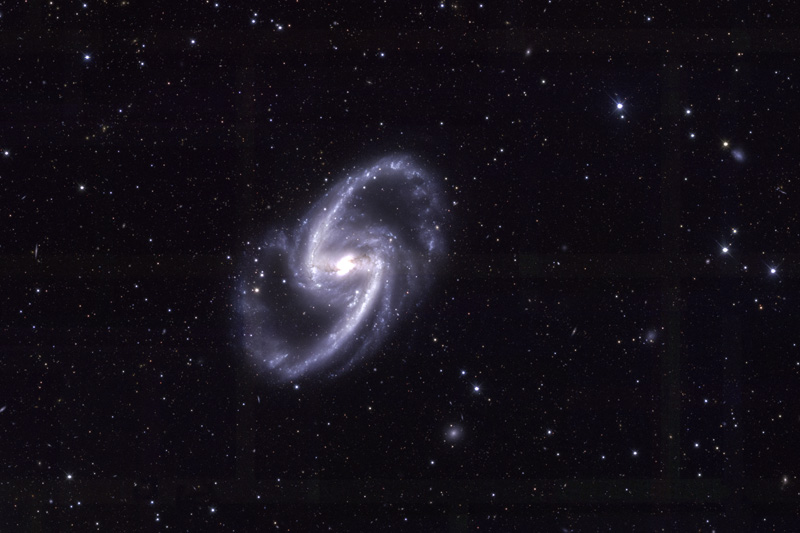 [91] [91]Click over image to expande |
NGC1365, también conocida como la Gran Galaxia Espiral Barrada, se ubica a 56 Millones de años luz de distancia en la constelación de Fornax y pertenece al cúmulo de galaxias [86] del mismo nombre. NGC 1365 posee un núcleo galáctico activo [93] (AGN) que rota a altísima velocidad dado que en su interior hay un agujero negro [94] súper masivo. La galaxia tiene un diámetro de 160.000 años luz lo que la hace muy similar en tamaño a nuestra galaxia la vía láctea. The Galaxy NGC 1365 also known as the Great Barred Spiral Galaxy, is located 56 millions light years away in the constellation of Fornax and belongs to the galaxy cluster [89] of the same name. NGC 1365 has an Active Galactic Nucleus [95] (AGN) which rotates at high velocity given that in its interior has a supermassive black hole [96]. The galaxy has a diameter of 160.000 light years which makes it very similar to our Milky Way galaxy. |
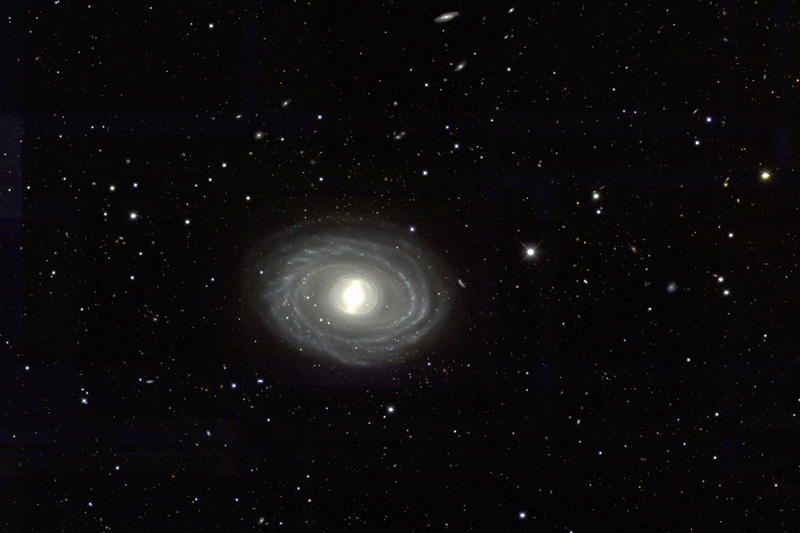 [97] [97]Click over image to expande |
NGC1398 o también llamada la Galaxia de los Brazos Esbeltos, es una galaxia espiral barrada [99] aislada que ubica a 65 millones de años luz en la constelación de Fornax y pertenece al cúmulo de galaxias [86] del mismo nombre. NGC 1398 tiene un diámetro de 135.000 años luz y posee alrededor de 100 mil millones de estrellas. NGC 1398 also known as the Slim Arms Galaxy, is an insolated spiral barred galaxy [100] which is located at 65 million light years in the constellation of Fornax and belongs to galaxy cluster [89] of the same name. NGC 1398 has a diameter of 135.000 light years and has about 100 billion stars. |
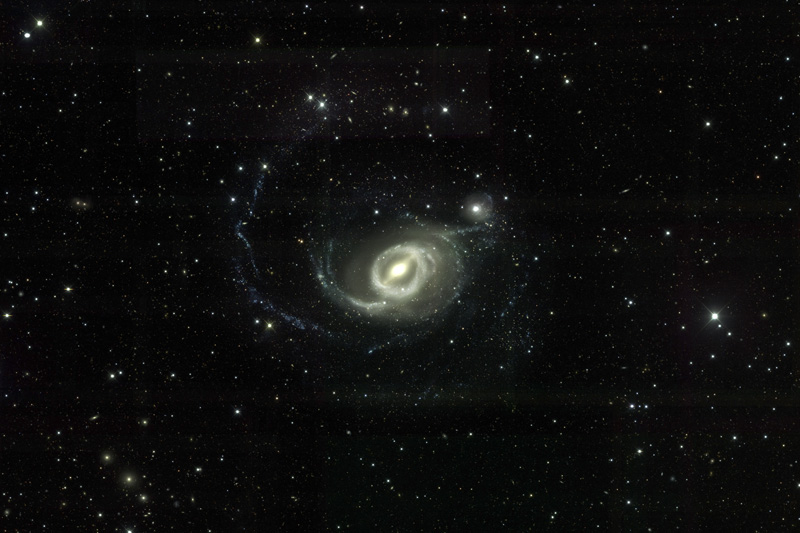 [101] [101]Click over image to expande |
NGC1512 es una galaxia espiral barrada [99] (SB(r)a) en la constelación de El Reloj (Horologium) que pertenece al grupo de galaxias del dorado y se ubica a 30 millones de años luz de distancia. Esta galaxia posee una extensión de 70.000 años luz de largo. El anillo que rodea la galaxia posee varias regiones de formación de estrellas. NGC 1512 is spiral barred galaxy [100] (SB(r)a) in the constellation of Horologium, which belongs to the Dorado groups of galaxies and it's located at 30 Millions light years. This galaxy has an extension of 70.000 light years in length. The ring that surrounds the galaxy has several star formation regions. |
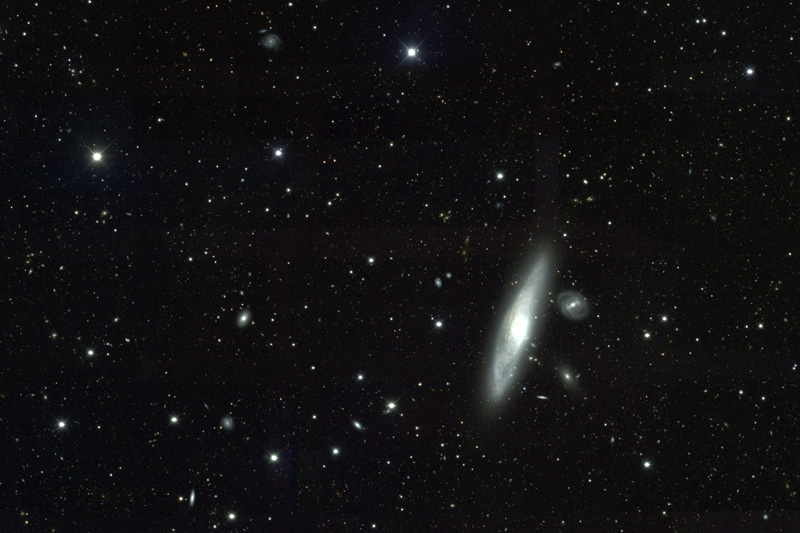 [103] [103]Click over image to expande |
NGC1515 o también llamada Dyscritus doradus es una galaxia espiral intermedia [85] del tipo SAB(s)bc que se ubica en la constelación del Pez Dorado (Dorado), pertenece al grupo de galaxias del Pez Dorado. NGC 1515 also known as the Dyscritus doradus, is an spiral intermediate galaxy [88] type SAB(s)bc which is located in the constellation of Dorado and belongs to the Dorado groups of galaxies. |
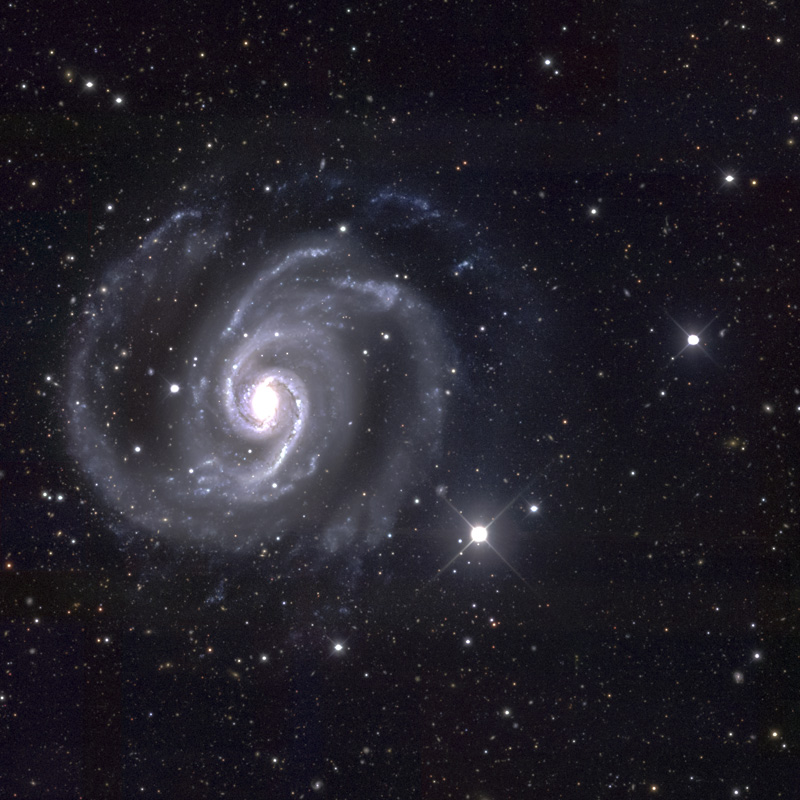 [105] [105]Click over image to expande |
NGC1566 o también conocida como Bellísima Dorado, es una galaxia espiral intermedia [85] del tipo SAP(c)bc, ubicada en la constelación del Pez Dorado (Dorado). Esta galaxia es un miembro dominante del grupo de galaxias del Pez Dorado. NGC 1566 es una de las galaxias Seyfert [107] más brillantes en el cielo y se ubica a 38,5 Millones de años luz. NGC 1566 also known as the Bellissimus Doradus, is an intermediate spiral galaxy [88] of type SAP(c)bc, which is located in the constellation of Doradus. This galaxy is a dominant member of the Dorado group of galaxies. NGC 1566 is one of the Seyfert galaxies [108] most brilliant on the sky and is located at 38,5 million light years. |
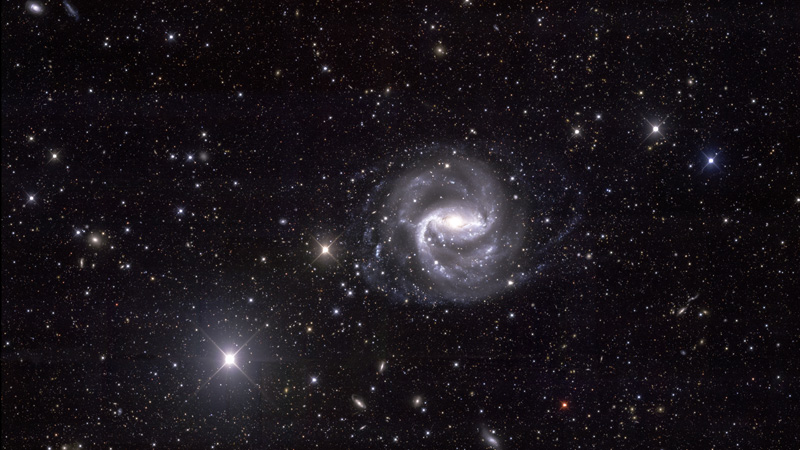 [109] [109]Click over image to expande |
NGC1672 o también llamada Lophéphora Dorádus, es una galaxia espiral barrada [99] del tipo SB(s)b ubicada en la constelación del Pez Dorado (Dorado) y pertenece a una extensión del cúmulo principal de galaxias del Pez Dorado. Se ubica a 60 millones de años luz de la Tierra. NGC 1672 also known as the Lophephora Doradus, is an spiral barred galaxy [88] of type SB(s)b located in the constellation of Dorado and belongs to an extension of galaxy cluster Dorado. It´s located at 60 million light years of the Earth. |
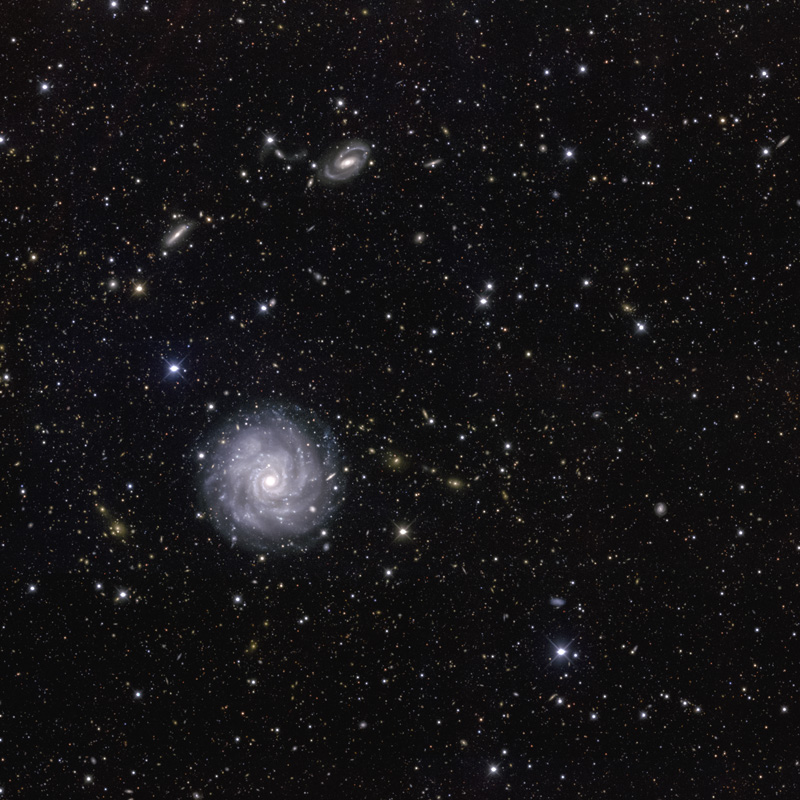 [111] [111]Click over image to expande |
NGC1703 es una galaxia espiral [113] del tipo SB(r)b, que fue descubierta por John Herschel en 1834. Se ubica a 66,5 Millones de años luz de distancia de la Tierra, en la constelación del Pez Dorado. NGC 1703 is an spiral galaxy [114] of type SB(r)b, that was discovered by John Herschel in 1834. It´s located at 66,5 million light years of the Earth in the constellation of Dorado. |
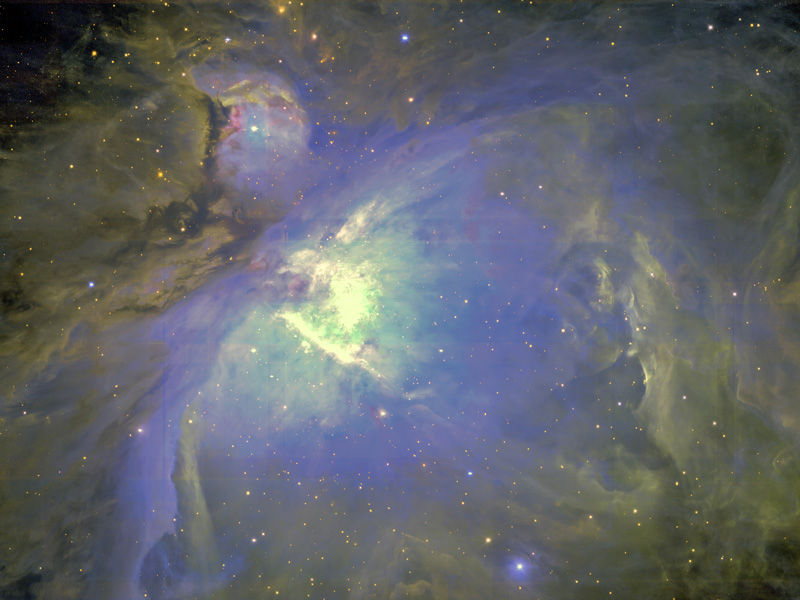 [115] [115]Click over image to expande |
NGC1976 o también conocida como Messier 42 (M42) o la Gran Nebulosa de Orión, es una nebulosa difusa [117] en la constelación de Orión. M42 se ubica en nuestra vía láctea a unos 1.300 años luz de distancia, es la región de formación de estrellas [118] mas cercana a la Tierra. Se estima que el diámetro de la Nebulosa de Orión es de alrededor de 24 años luz. NGC 1976 also known as Messier 42 (M42) or the Great Orion Nebula, is a diffuse nebula [119] in the constellation of Orion. M42 is located on the Milky Way at 1.300 light years of distance, is the star formation [120] region closer to the Earth. It´s estimated that the diameter of the Orion Nebula is about 24 light years. |
|
Click over image to expande |
NGC1613, los 62 CCDs de la DECam permiten cubrir una gran parte del cielo en una sóla exposición. Esta imágen muestra el plano completo del Cúmulo Fornax [123], un grupo de galaxias [124] ubicadas a una distancia de 62 millones de años luz.
NGC1613, the 62 CCDs of DECam allows to cover a large part of the sky in a single exposure. This image shows the full plane of Fornax Cluster [125], a group of galaxies [126] located at a distance of 62 million light years. |
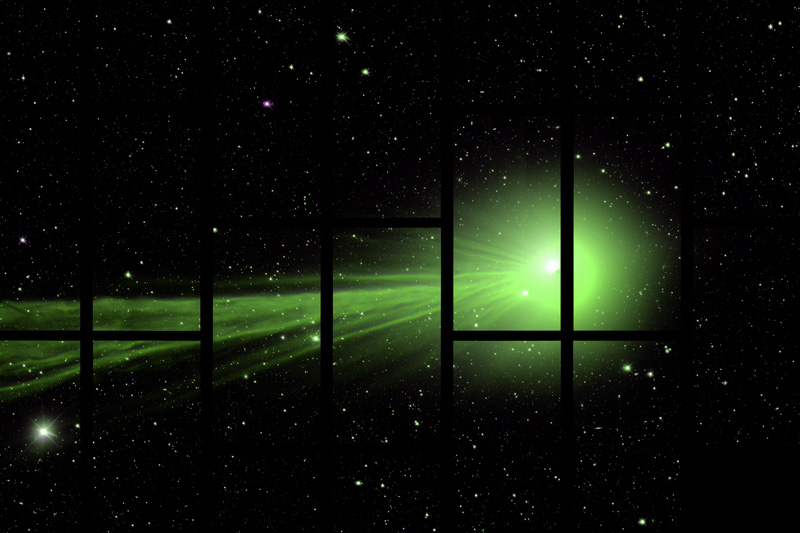 [127] [127]Click over image to expande |
C2014Q2 (Lovejoy) es un cometa [129] de periodo largo descubierto por Terry Lovejoy [130] el 17 de Agosto de 2014. La imagen fue tomada cuando el cometa [129] se encontraba a 82 millones de Kilómetros de la Tierra. El centro del cometa [129] es una bola de hielo de aproximadamente 5 kilómetros, y la cabeza visible del cometa Lovejoy [131] es una nube de gas y polvo de unos 643.000 Kilómetros de diámetro. En su paso mas cercano al sol el 30 de Enero de 2015 el cometa [129] liberaba agua a una tasa de 20 toneladas por segundo. C2014 Q2 (Lovejoy) is a comet [132] of long period that was discover by Terry Lovejoy [133] the 17 on August of 2014. The image was taken when the comet [132] was at 82 millions of kilometers of Earth. The center of the comet [132] is an ice ball of about 5 kilometer, and the visible head of the Comet Lovejoy [134] is a gas cloud and dust of some 643.000 Kilometers of diameter. In its passing closer to the sun the 30 of January of 2015, the comet [132] released water at a rate of 20 tons per second. |
©Imágenes tomadas por la Colaboración DES con la cámara montada en el Telescopio Blanco del Observatorio de Cerro Tololo en Chile.
©Images taken by the DES Collaboration with the DECAM camera mounted on the Blanco Telescope at the Cerro Tololo Observatory in Chile.
(in progress)
Media Relations and events are key to public awareness of astronomy science impact.
One of the goals is to establish permanent relationship with the local and national media. The EPO team organized the “1st Seminar of Astronomy for Journalists” which counted with the participation of more than 40 local journalists. After this effort and with permanent contact, more information each time has been published through different local and national media.
NOIRLab Sites to Remain Closed for Public Visits Until February 2021 |
Los Sitios de NOIRLab Permanecerán Cerrados para Visitas Públicas hasta Febrero 2021 |
Para información en español sobre las visitas turisticas a Cerro Tololo, puede enviar un correo electrónico a ctiorecp@noao.edu [136] o llamar a +56-51-2205200.
Cerro Tololo is open to the public every Saturday, summer and winter, weather permitting. For safety and security reasons, the number of visitors is limited to two groups of 40 people. One group meets at the gatehouse at 9 AM and the other at 1PM. Because the number of visitors is limited, advance reservations are essential. During the tourist season from mid-December to March, reservations must be made several weeks in advance. To make reservations, call 51 2205 200. Permits must be picked up in La Serena before proceeding to the mountain. Access to the mountain is by private vehicles only. There is no public transportation.
Permits are free and may be obtained from the Reception Desk in La Serena. Tours are conducted at no charge by a professional guide. Total elapsed time from leaving the gatehouse until returning to the highway is approximately three hours.
For more information on public access to CTIO, click here [24].
Astronomers and other official visitors planning a trip to Cerro Tololo will find useful information here [137].
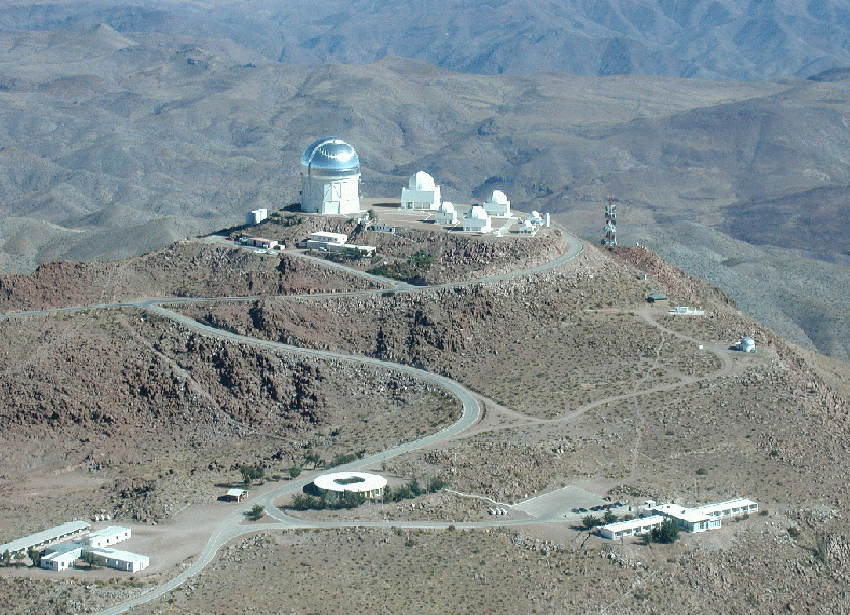
 |
Leonor Opazo - Program Manager |
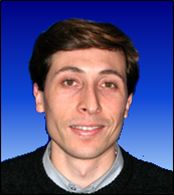 |
Juan Seguel - EPO NOAO-S Coordinator |
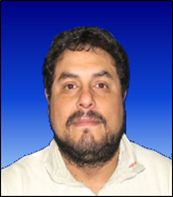 |
Daniel Munizaga - Scientific Assistant & Technical Support |
Links
[1] http://www.noao.edu/education/
[2] http://www.ctio.noao.edu/noao/content/noao-s-epo-program-team
[3] http://www.ctio.noao.edu/noao/sites/default/files/ctio-sunset-500.jpg
[4] http://www.ctio.noao.edu/noao/content/visits-tololo
[5] http://www.ctio.noao.edu/noao/content/student-programs-and-internships
[6] http://www.ctio.noao.edu/noao/content/reu-program
[7] http://www.ctio.noao.edu/noao/content/pia-program
[8] http://www.ctio.noao.edu/noao/content/go-faar-program
[9] http://www.ctio.noao.edu/noao/content/other-student-opportunities
[10] http://www.ctio.noao.edu/noao/node/1147
[11] http://www.ctio.noao.edu/noao/content/CADIAS
[12] http://www.ctio.noao.edu/noao/content/astro-chile
[13] http://www.ctio.noao.edu/noao/content/robotic-hugo-e-schwarz-telescope
[14] http://www.ctio.noao.edu/noao/content/dark-sky-education
[15] http://www.globeatnight.org/
[16] http://www.ctio.noao.edu/noao/content/teaching-galileoscopes
[17] http://www.ctio.noao.edu/noao/content/media-relations
[18] http://www.gemini.edu/AstroDayChile2010
[19] http://www.ctio.noao.edu/noao/content/noao-s-epo-programs
[20] http://www.ctio.noao.edu/noao/content/interesting-links
[21] http://www.ctio.noao.edu/noao/content/REUPIA-Previous-Programs
[22] http://www.imglobal.com/en/index.aspx
[23] mailto:ctioreu@noao.edu?subject=REU%2FPIA%20Program%20inquiry
[24] http://www.ctio.noao.edu/noao/content/public-access
[25] https://www.flickr.com/gp/138613652@N03/43LYq4
[26] http://www.noao.edu/education/astro/chile/
[27] http://www.ctio.noao.edu/noao/content/preserving-dark-skies
[28] http://www.opcc.cl/
[29] http://www.ctio.noao.edu/noao/sites/default/files/EPO/robotic-telescope.jpg
[30] http://www.ctio.noao.edu/noao/sites/default/files/EPO/robotic-telescope2.jpg
[31] http://www.ctio.noao.edu/noao/node/106
[32] http://www.ctio.noao.edu/noao/content/REUPIA-FAQ
[33] http://www.ctio.noao.edu/noao/content/GO-FAAR-Program
[34] http://www.ctio.noao.edu/noao/content/Other-Student-Opportunities
[35] http://us.fulbrightonline.org/about/fulbright-us-student-program
[36] mailto:ctioreu@noao.edu?subject=REU%2FPIA%20program%20inquiry
[37] http://www.ctio.noao.edu/noao
[38] http://www.noao.edu/
[39] http://www.nsf.gov
[40] http://www.nsf.gov/crssprgm/reu/
[41] http://www.ctio.noao.edu/noao/content/PIA-Program
[42] https://www.noao.edu/kpno/reu/
[43] http://aas.org/jobs/summer-opportunities
[44] http://www.aps.org/careers/employment/internships.cfm#undergrad
[45] http://www.pathwaystoscience.org/
[46] http://www.ctio.noao.edu/noao/CTIO-REU-Applicationform
[47] http://www.ctio.noao.edu/noao/sites/default/files/ctioreupia/CTIO_REU2016_8x10.5_flier.pdf
[48] http://www.ctio.noao.edu/noao/node/109
[49] http://www.ctio.noao.edu/noao/content/Publications-Related-CTIO-REU-Projects
[50] http://www.ctio.noao.edu/noao/content/EnglishSpanish-Astronomy-Dictionary
[51] http://www.ctio.noao.edu/noao/content/2016-CTIO-Summer-Student-Interns
[52] http://www.ctio.noao.edu/noao/content/2015-CTIO-Summer-Student-Interns
[53] http://www.ctio.noao.edu/noao/content/2014-CTIO-Summer-Student-Interns
[54] http://www.ctio.noao.edu/noao/content/2013-CTIO-REUPIA-Student-Program
[55] http://www.ctio.noao.edu/noao/content/ctio-reupia-2012
[56] http://www.ctio.noao.edu/noao/content/ctio-reupia-2011
[57] http://www.ctio.noao.edu/noao/content/ctio-reupia-2010
[58] http://www.ctio.noao.edu/noao/content/ctio-reupia-2009
[59] http://www.ctio.noao.edu/noao/content/ctio-reupia-2008
[60] http://www.ctio.noao.edu/noao/content/ctio-reupia-2007
[61] http://www.ctio.noao.edu/noao/content/ctio-reupia-2006
[62] http://www.ctio.noao.edu/noao/content/ctio-reupia-2005
[63] http://www.ctio.noao.edu/noao/content/ctio-reupia-2004
[64] http://www.ctio.noao.edu/noao/content/ctio-reupia-2003
[65] http://www.ctio.noao.edu/noao/content/ctio-reupia-2002
[66] http://www.ctio.noao.edu/noao/content/ctio-reupia-2001
[67] http://www.ctio.noao.edu/noao/content/ctio-reupia-2000
[68] http://www.ctio.noao.edu/noao/content/ctio-reupia-1999
[69] http://www.ctio.noao.edu/noao/content/ctio-reupia-1998
[70] http://www.ctio.noao.edu/noao/content/ctio-reupia-1996
[71] http://www.ctio.noao.edu/noao/content/ctio-reupia-1995
[72] mailto:ctioreu@ctio.noao.edu?subject=contribution%20for%20English%2FSpanish%20Astronomy%20Dictionary
[73] mailto:ctiopia@noao.edu?subject=internship%20inquiry
[74] http://www.ctio.noao.edu/noao/content/REU-Program
[75] http://www.ctio.noao.edu/noao/content/About-CTIO
[76] http://aas.org/meetings/future-aas-meetings
[77] http://www.ctio.noao.edu/noao/ctio-pia-application
[78] mailto:ctiopia@ctio.noao.edu?subject=CTIO%20PIA%20program
[79] http://www.ctio.noao.edu/noao/content/CTIO-REUPIA-Alumni
[80] http://www.vanderbilt.edu/gradschool/bridge/
[81] mailto:ctioreu@ctio.noao.edu
[82] http://www.ctio.noao.edu/noao/content/professional-internships-programs
[83] http://vms.fnal.gov/stillphotos/2016/0000/16-0048-03.jpg
[84] http://vms.fnal.gov/stillphotos/2016/0000/16-0048-03.hr.jpg
[85] https://es.wikipedia.org/wiki/Galaxia_espiral_intermedia
[86] https://es.wikipedia.org/wiki/Agrupación_galáctica
[87] https://es.wikipedia.org/wiki/Carolina_Herschel
[88] https://en.wikipedia.org/wiki/Intermediate_spiral_galaxy
[89] https://en.wikipedia.org/wiki/Galaxy_cluster
[90] https://en.wikipedia.org/wiki/Caroline_Herschel
[91] http://vms.fnal.gov/stillphotos/2016/0000/16-0048-04.jpg
[92] http://vms.fnal.gov/stillphotos/2016/0000/16-0048-04.hr.jpg
[93] https://es.wikipedia.org/wiki/Galaxia_activa
[94] https://es.wikipedia.org/wiki/Agujero_negro
[95] https://en.wikipedia.org/wiki/Active_galactic_nucleus
[96] https://en.wikipedia.org/wiki/Black_hole
[97] http://vms.fnal.gov/stillphotos/2016/0000/16-0048-05.jpg
[98] http://vms.fnal.gov/stillphotos/2016/0000/16-0048-05.hr.jpg
[99] https://es.wikipedia.org/wiki/Galaxia_espiral_barrada
[100] https://en.wikipedia.org/wiki/Barred_spiral_galaxy
[101] http://vms.fnal.gov/stillphotos/2016/0000/16-0048-06.jpg
[102] http://vms.fnal.gov/stillphotos/2016/0000/16-0048-06.hr.jpg
[103] http://vms.fnal.gov/stillphotos/2016/0000/16-0048-07.jpg
[104] http://vms.fnal.gov/stillphotos/2016/0000/16-0048-07.hr.jpg
[105] http://vms.fnal.gov/stillphotos/2016/0000/16-0048-08.jpg
[106] http://vms.fnal.gov/stillphotos/2016/0000/16-0048-08.hr.jpg
[107] https://es.wikipedia.org/wiki/Galaxia_Seyfert
[108] https://en.wikipedia.org/wiki/Seyfert_galaxy
[109] http://vms.fnal.gov/stillphotos/2016/0000/16-0048-09.jpg
[110] http://vms.fnal.gov/stillphotos/2016/0000/16-0048-09.hr.jpg
[111] http://vms.fnal.gov/stillphotos/2016/0000/16-0048-10.jpg
[112] http://vms.fnal.gov/stillphotos/2016/0000/16-0048-10.hr.jpg
[113] https://es.wikipedia.org/wiki/Galaxia_espiral
[114] https://en.wikipedia.org/wiki/Spiral_galaxy
[115] http://vms.fnal.gov/stillphotos/2016/0000/16-0048-11.jpg
[116] http://vms.fnal.gov/stillphotos/2016/0000/16-0048-11.hr.jpg
[117] https://es.wikipedia.org/wiki/Nebulosa_difusa
[118] https://es.wikipedia.org/wiki/Formación_estelar
[119] https://en.wikipedia.org/wiki/Diffuse_nebulae
[120] https://en.wikipedia.org/wiki/Star_formation
[121] http://vms.fnal.gov/stillphotos/2016/0000/16-0048-02.jpg
[122] http://vms.fnal.gov/stillphotos/2016/0000/16-0048-02.hr.jpg
[123] https://es.wikipedia.org/wiki/Cúmulo_de_Fornax
[124] http://es.wikipedia.org/wiki/Agrupación_galáctica
[125] https://en.wikipedia.org/wiki/Fornax_Cluster
[126] http://en.wikipedia.org/wiki/Galaxy_cluster
[127] http://vms.fnal.gov/stillphotos/2016/0000/16-0048-01.jpg
[128] http://vms.fnal.gov/stillphotos/2016/0000/16-0048-01.hr.jpg
[129] https://es.wikipedia.org/wiki/Cometa
[130] https://es.wikipedia.org/wiki/Terry_Lovejoy
[131] https://es.wikipedia.org/wiki/C/2014_Q2_(Lovejoy)
[132] https://en.wikipedia.org/wiki/Comet
[133] https://en.wikipedia.org/wiki/Terry_Lovejoy
[134] https://en.wikipedia.org/wiki/C/2014_Q2_(Lovejoy)
[135] http://www.ctio.noao.edu/noao/content/Contact-CTIO
[136] mailto:ctiorecp@noao.edu
[137] http://www.ctio.noao.edu/noao/content/Visiting-Astronomers-Travel-Guide